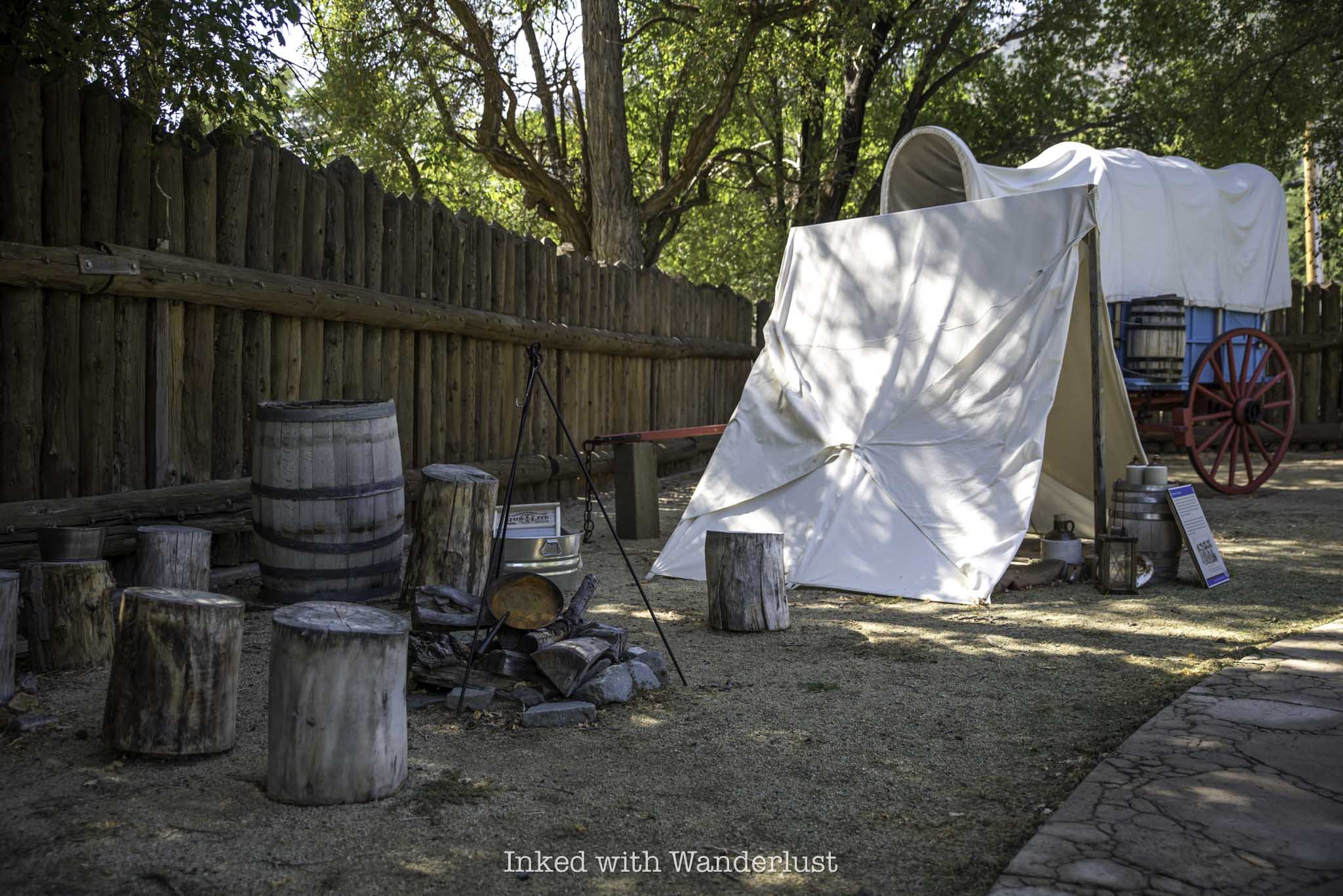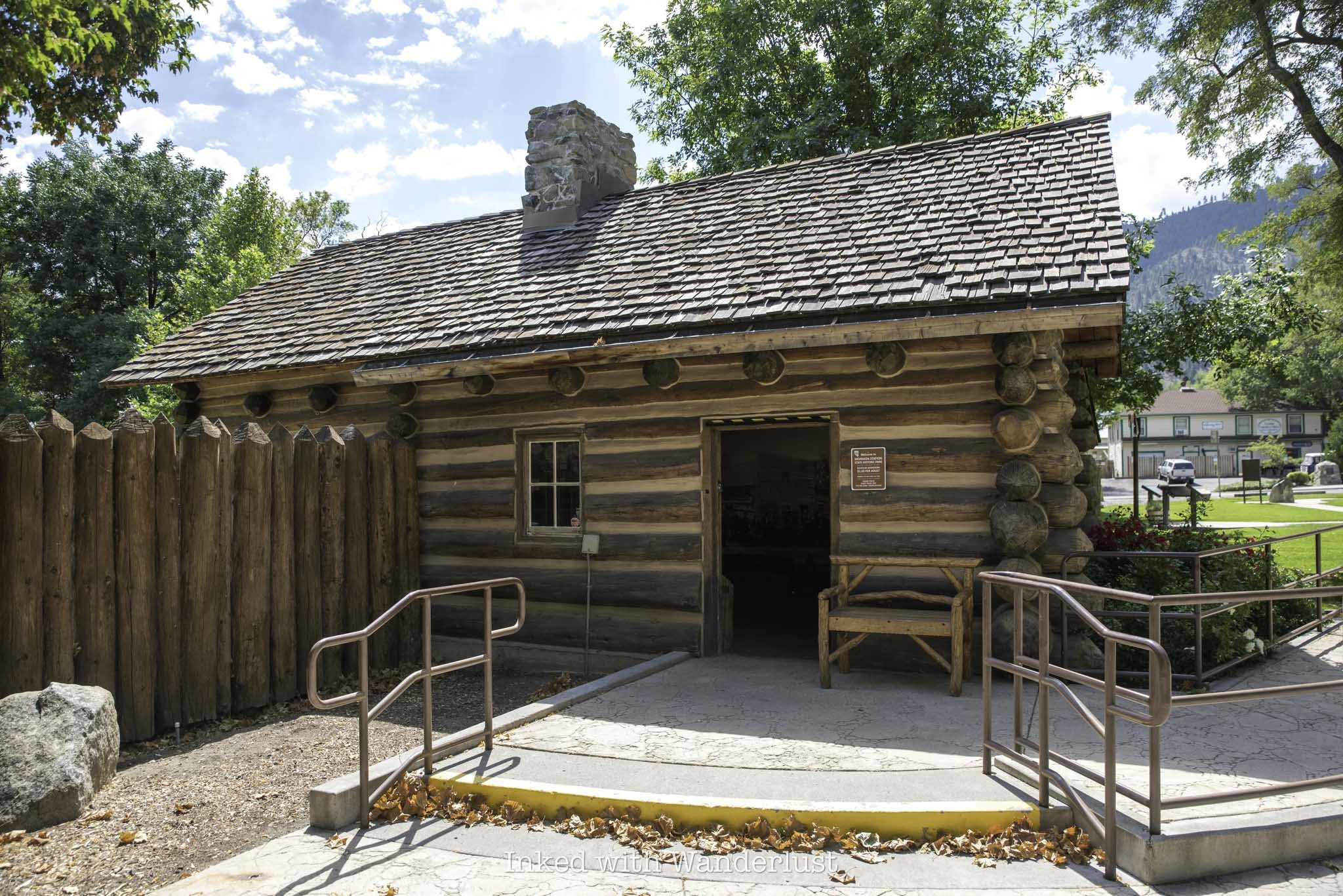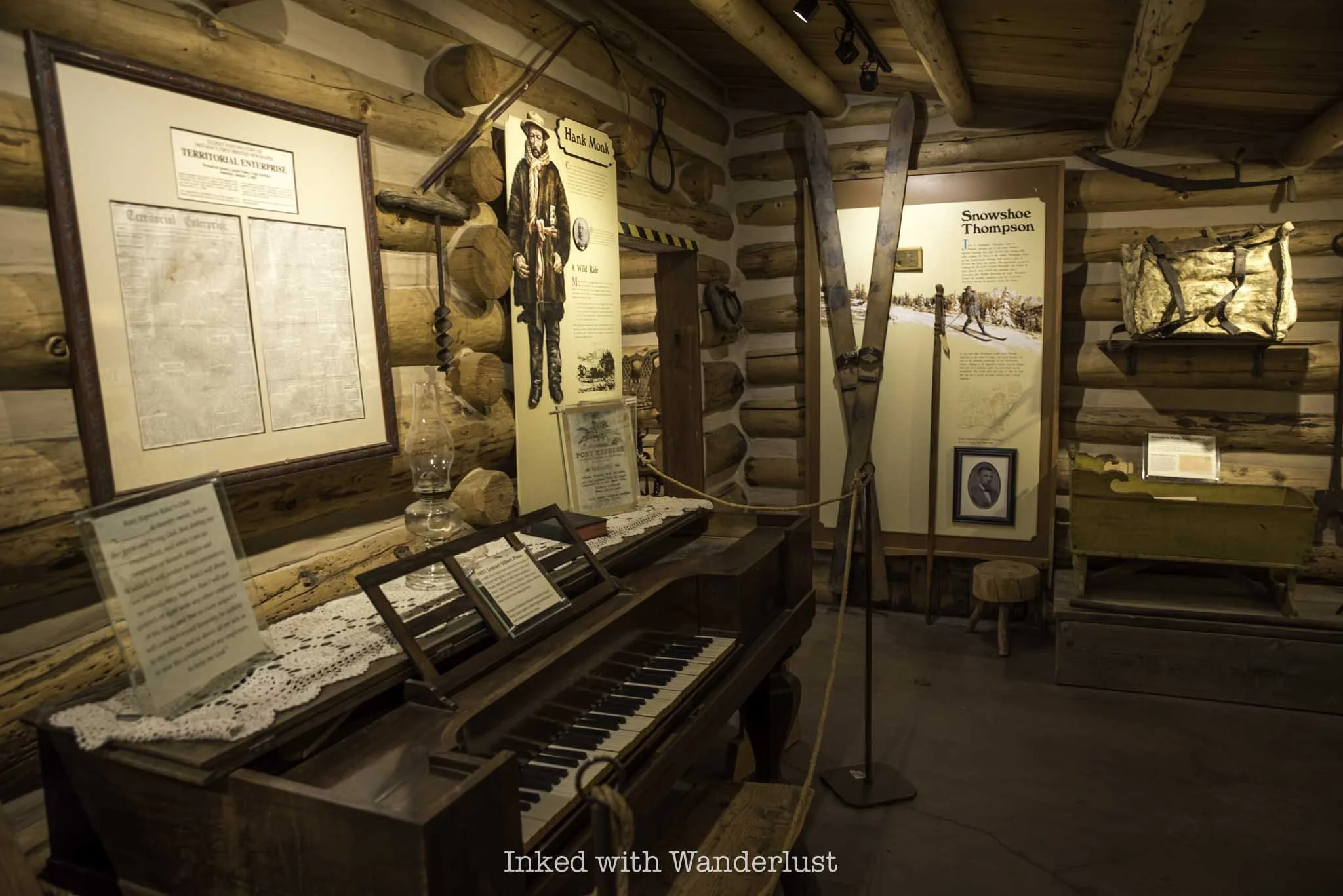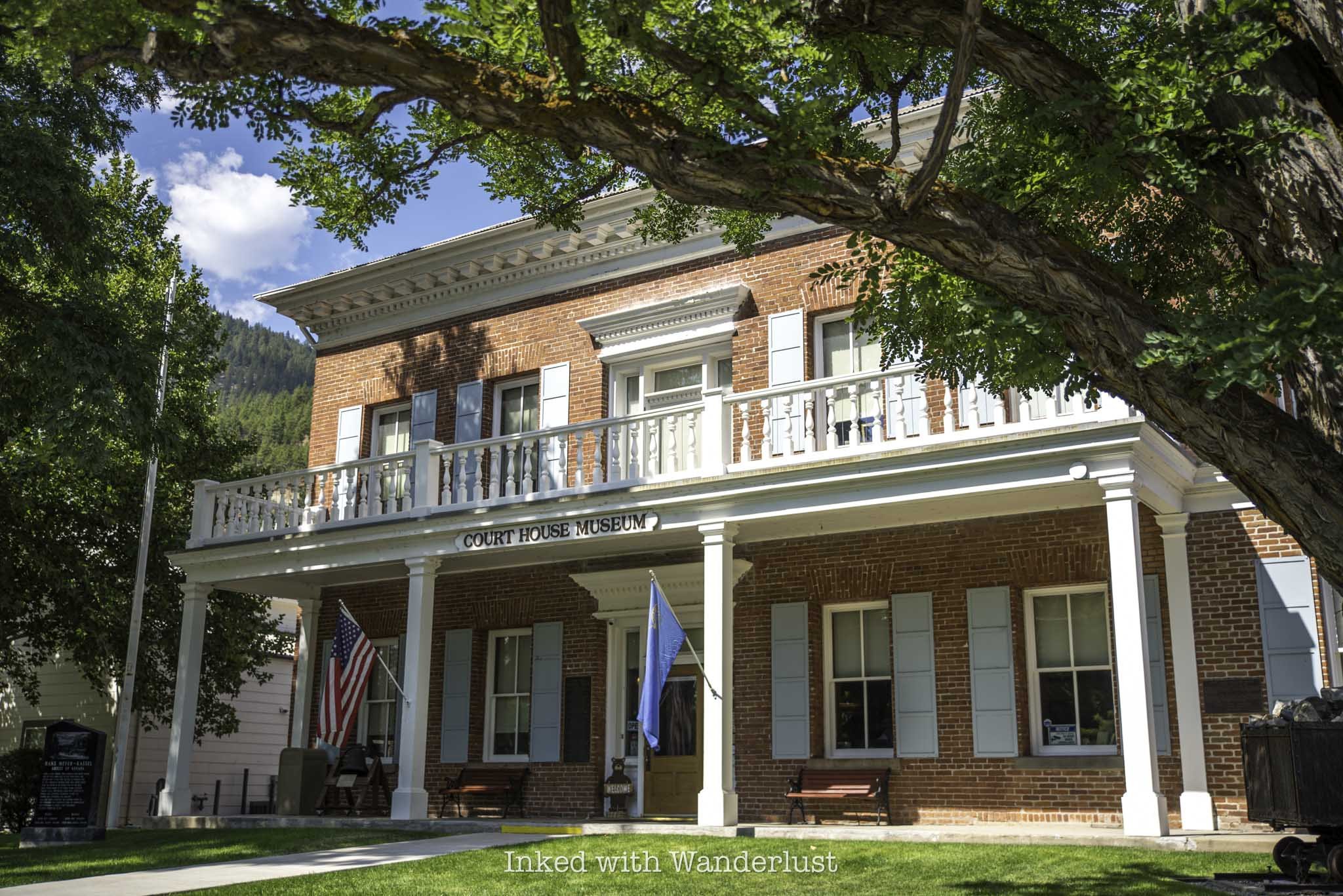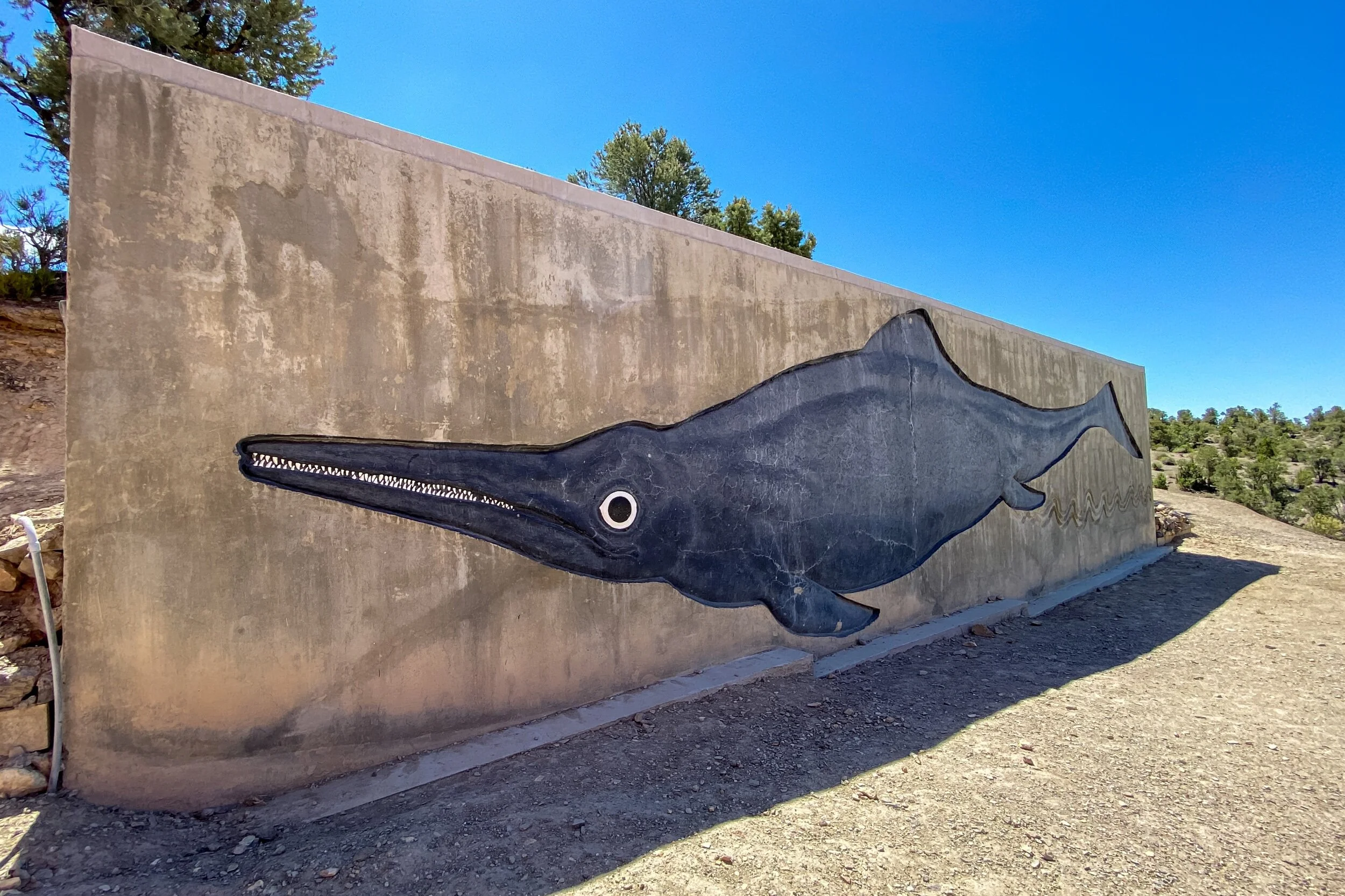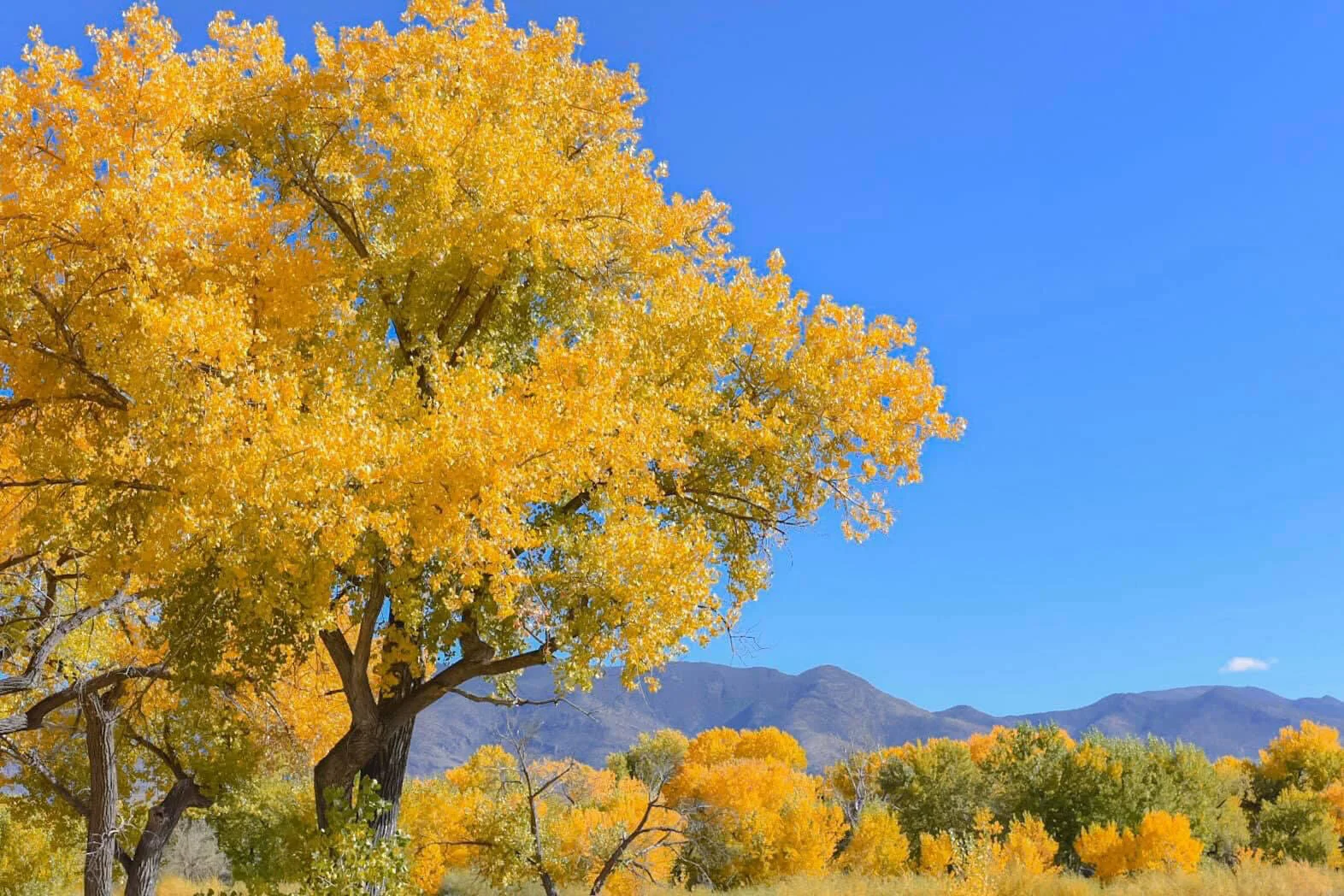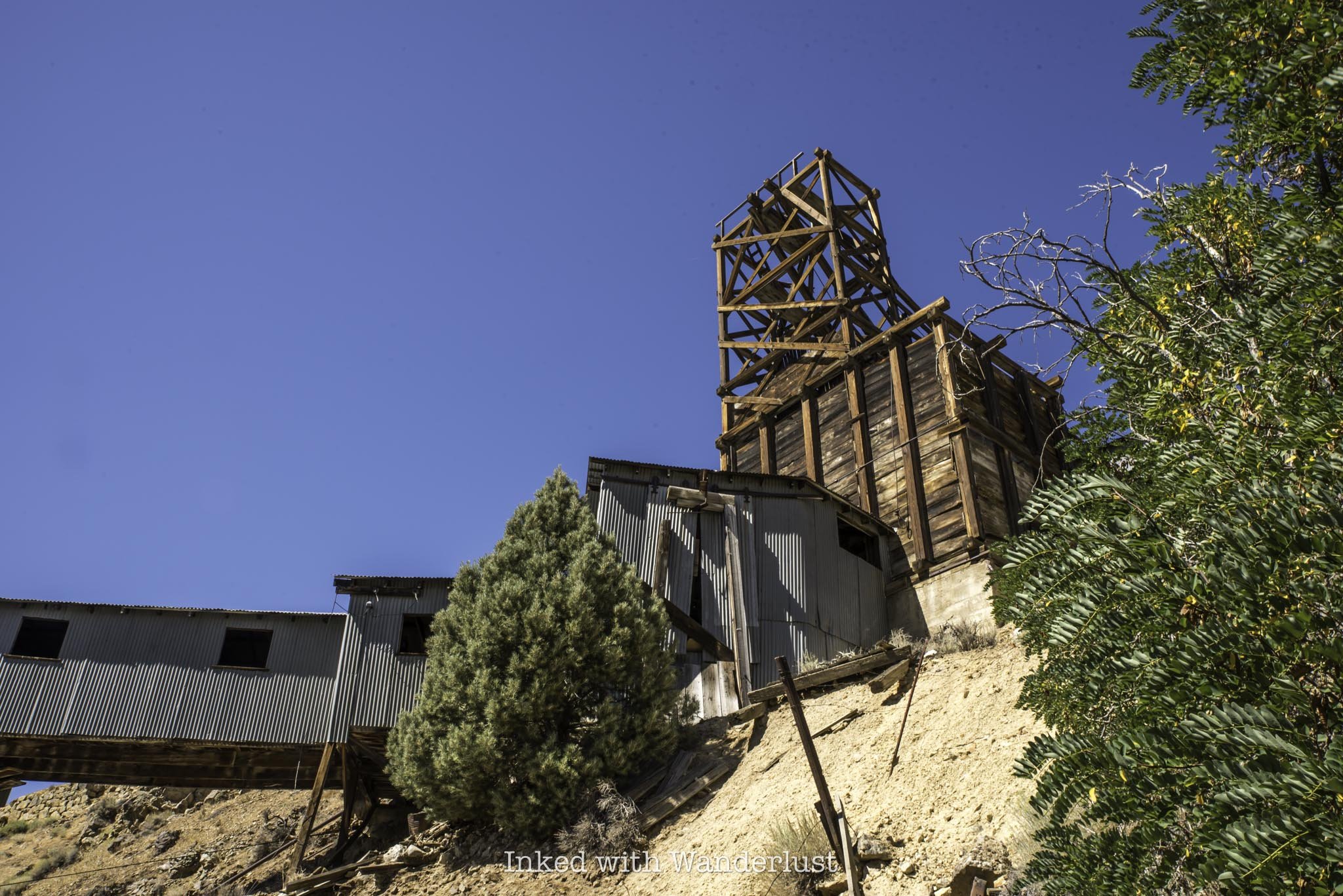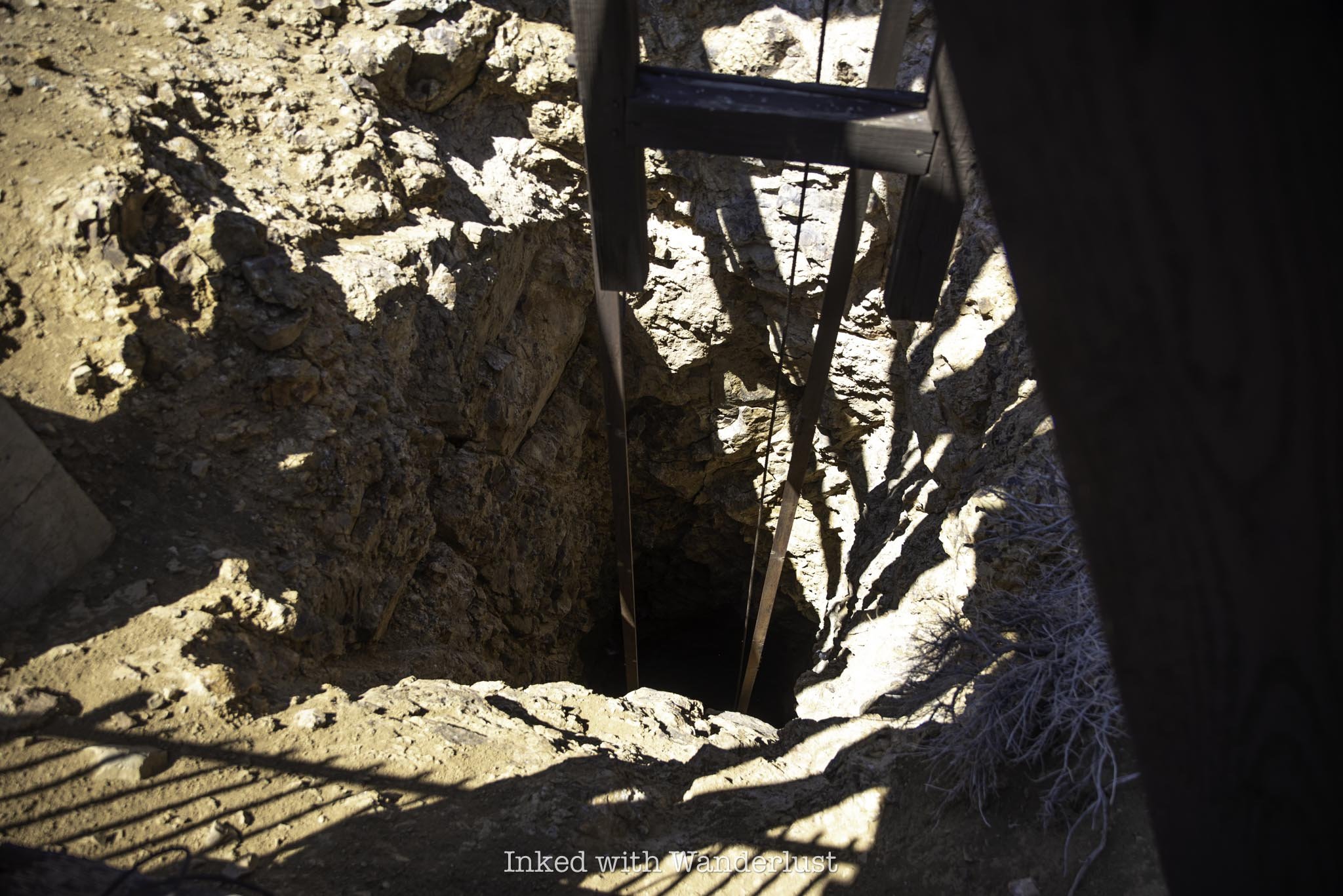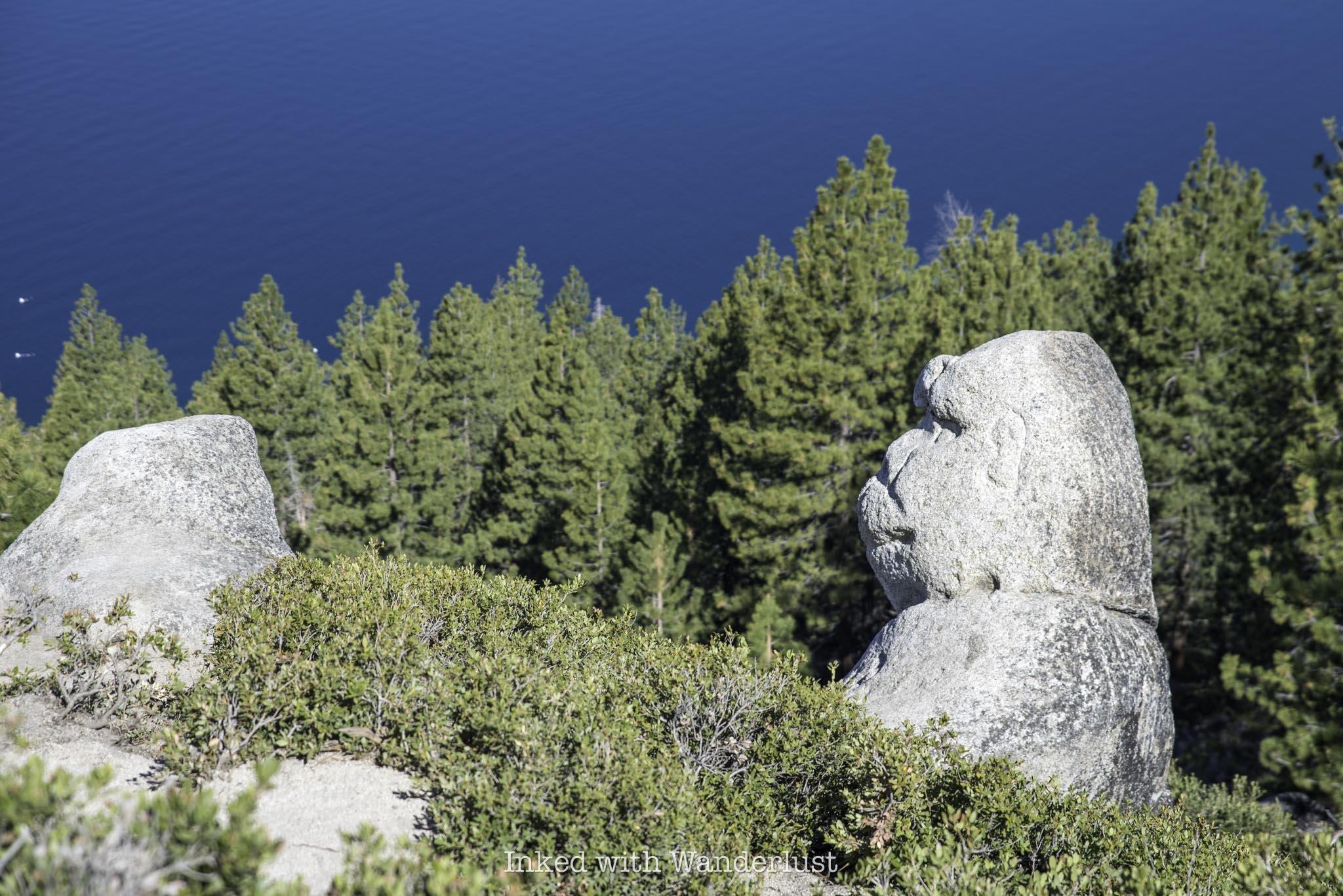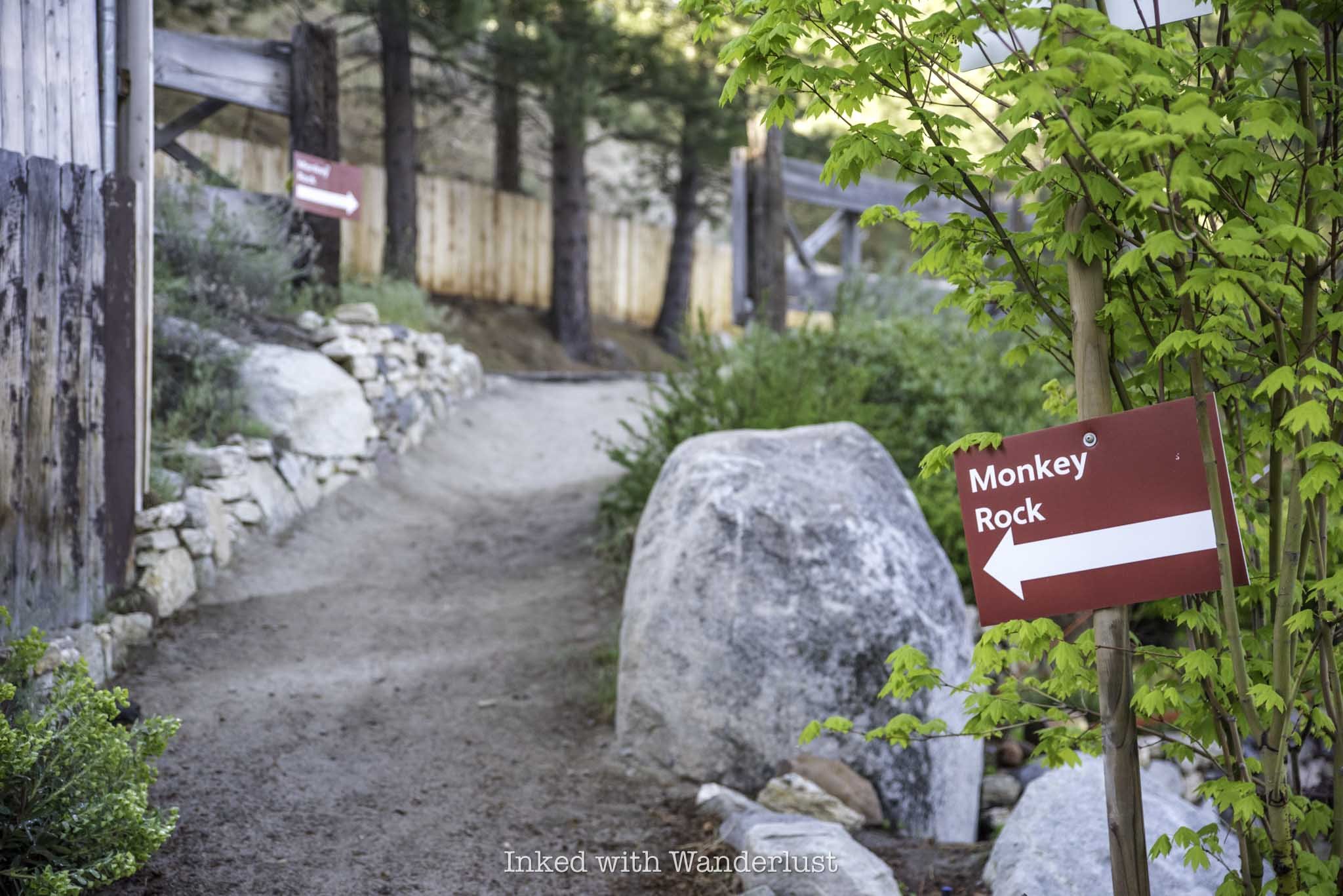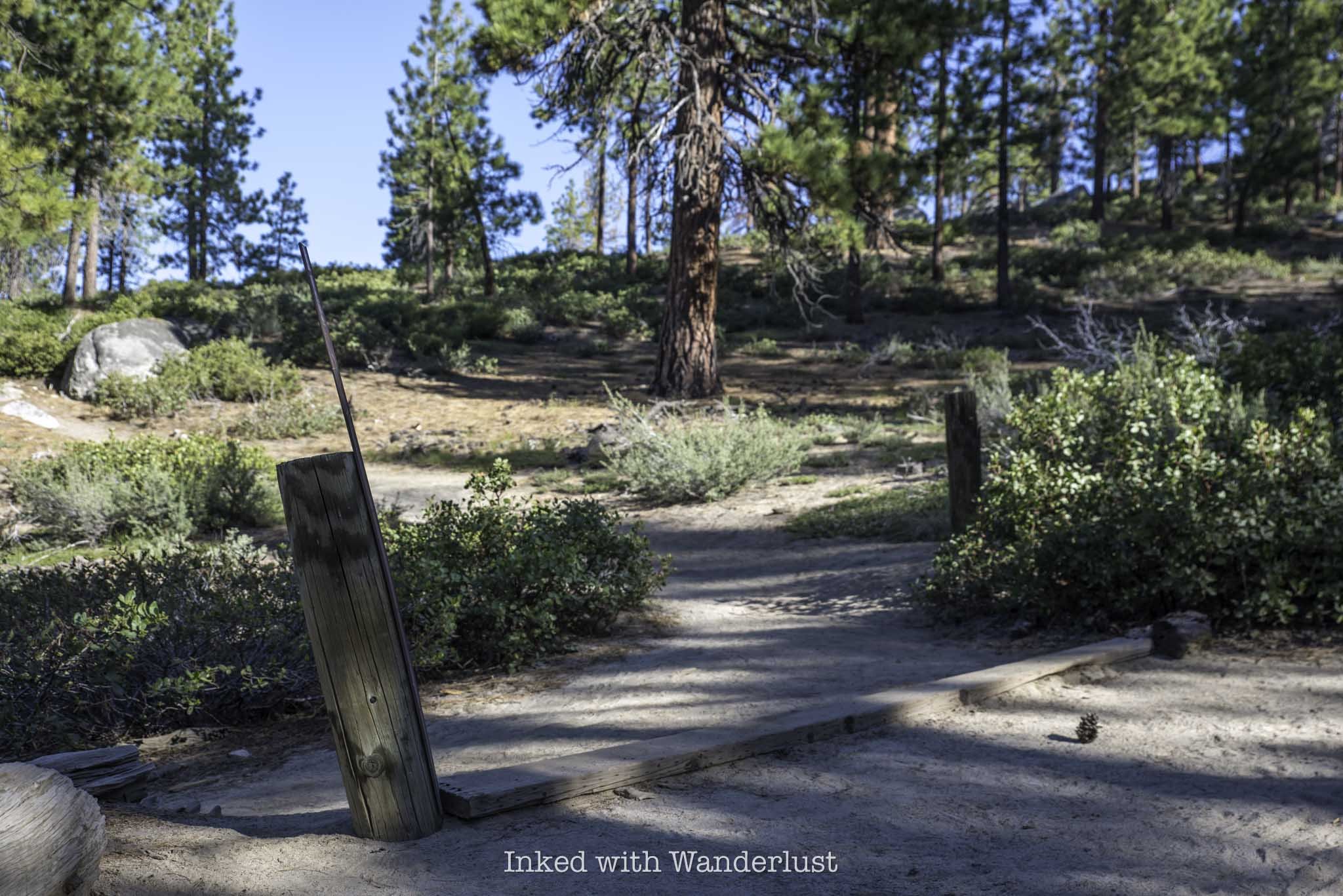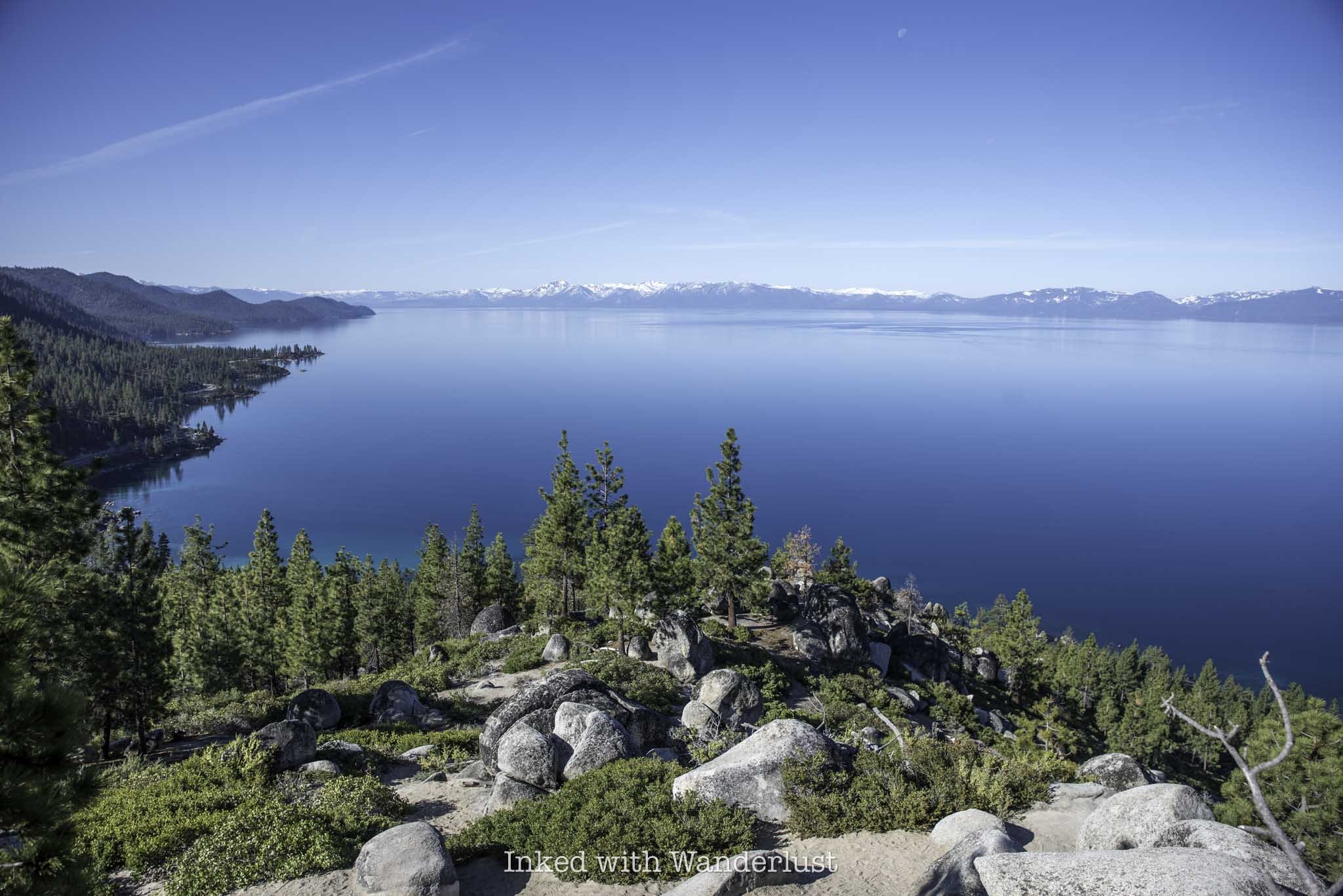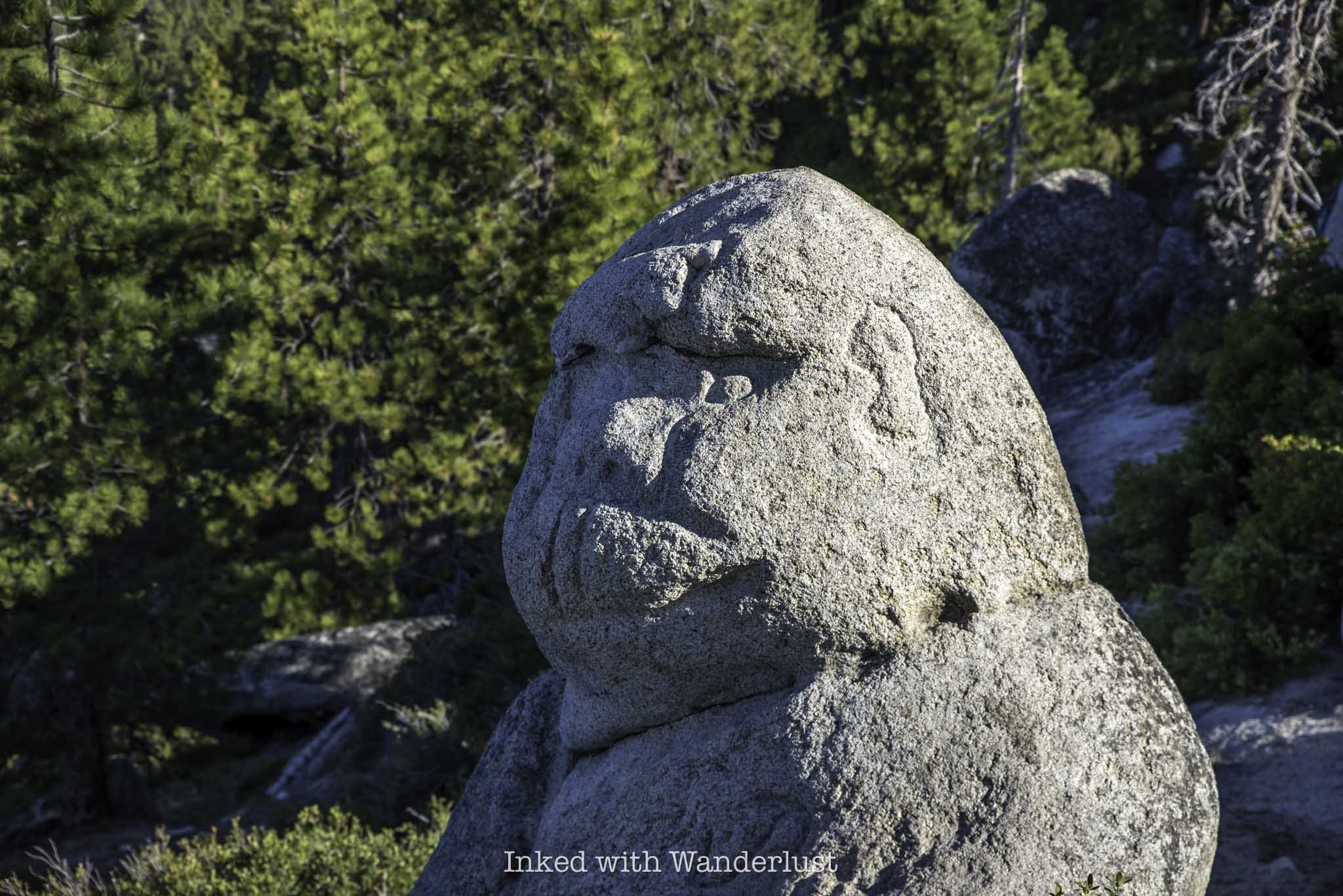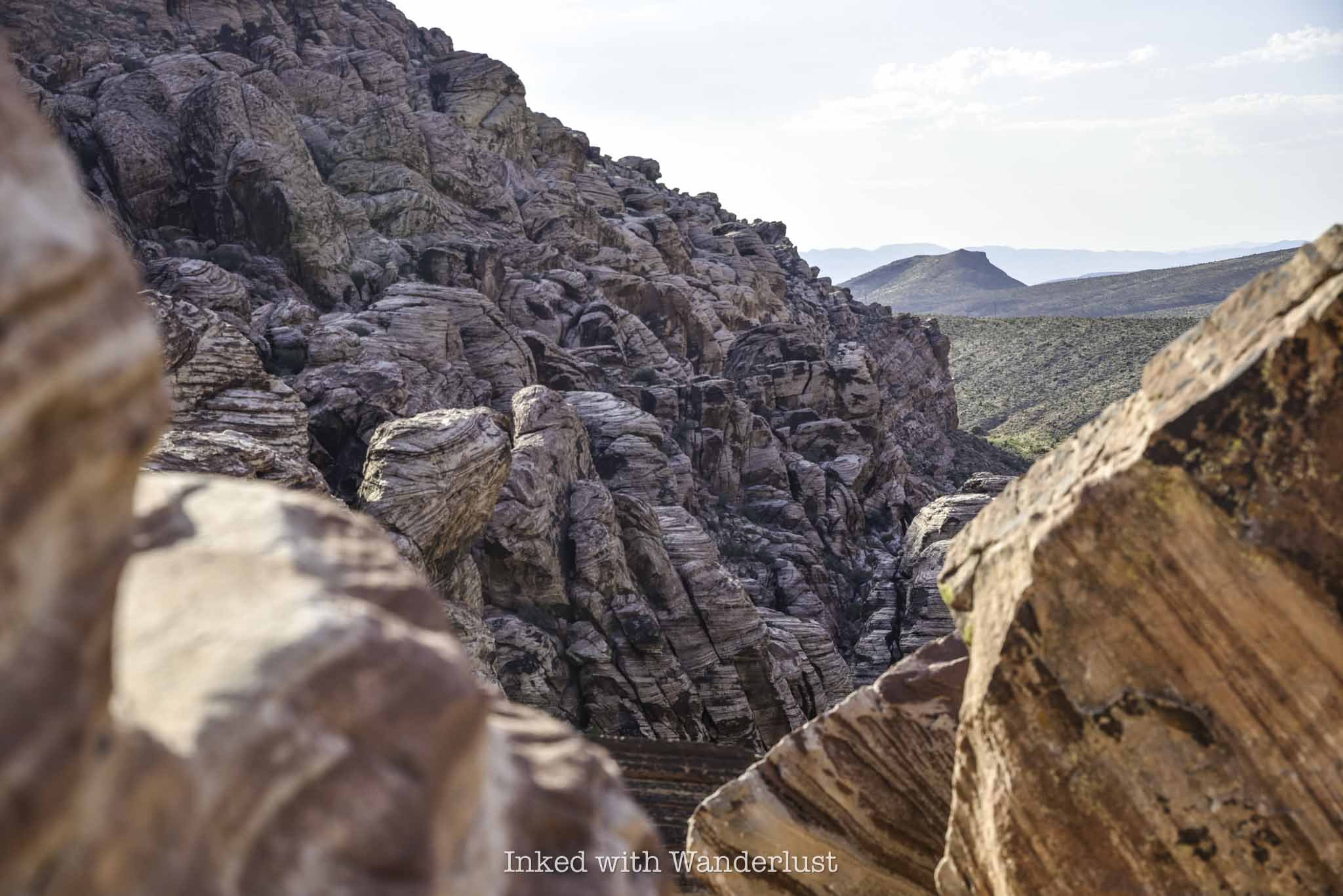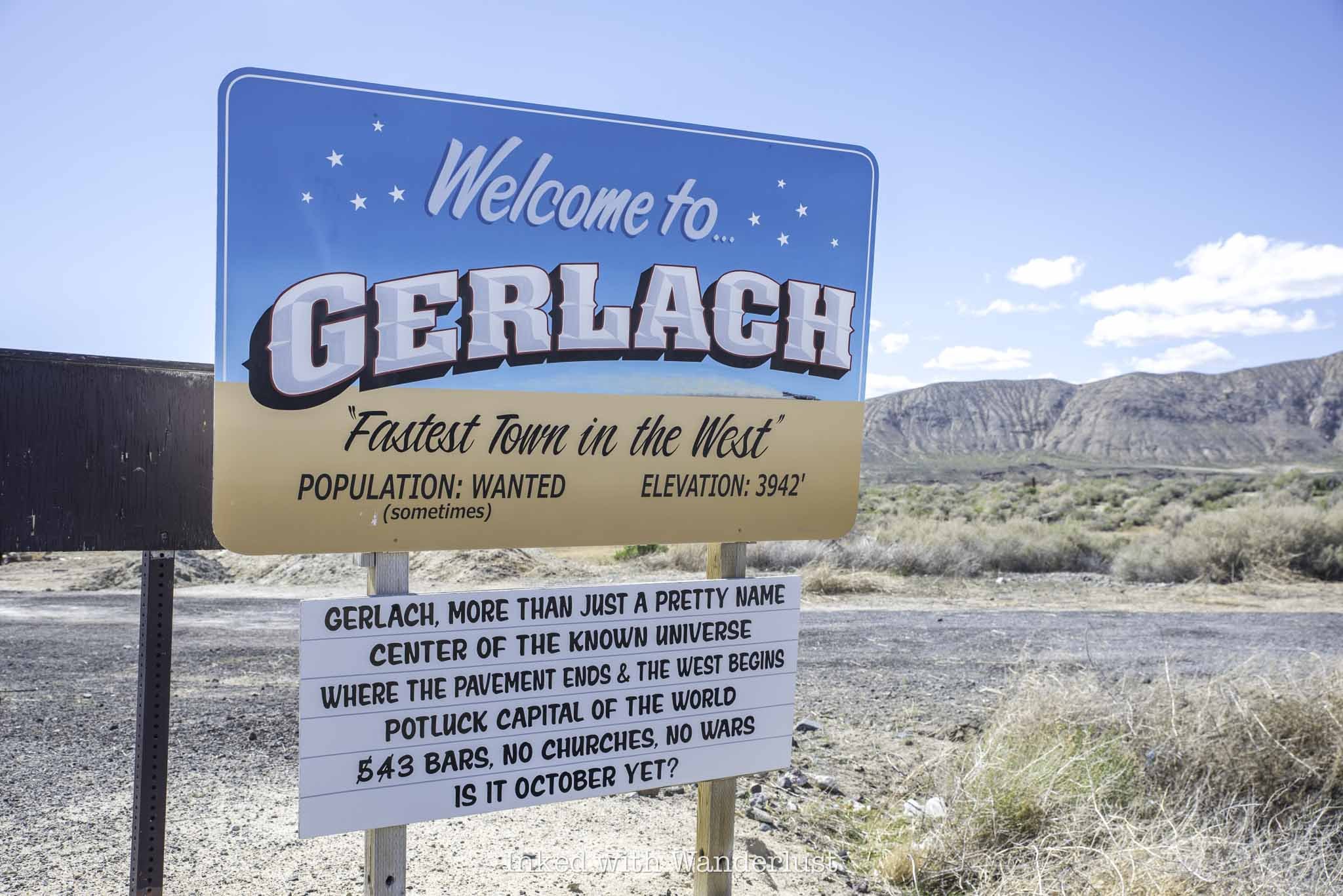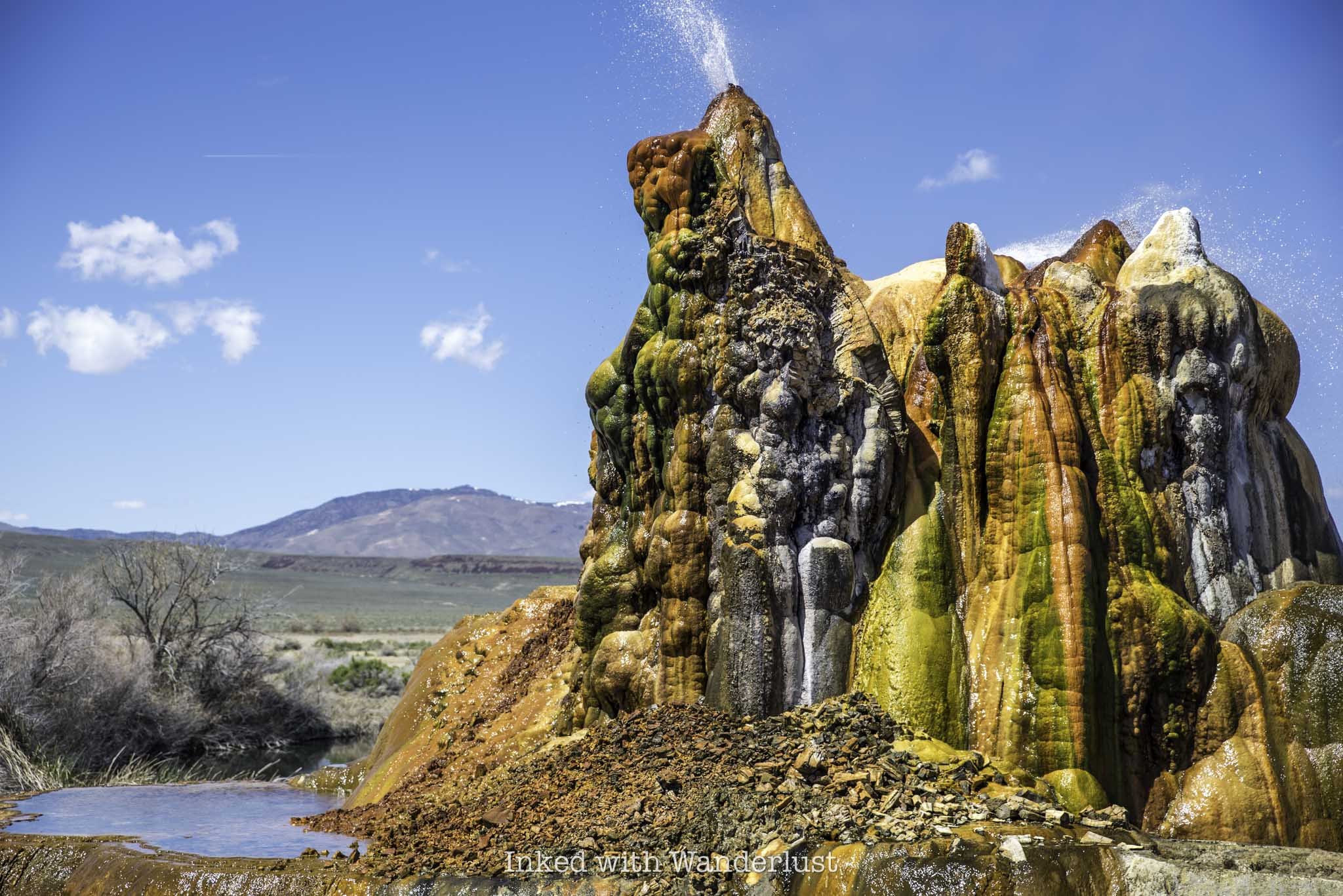Visit the Historic Mormon Station in Genoa
When searching for historic places in Nevada to visit, it doesn’t get much more historical than visiting the site of the first settlement in the state, Mormon Station Historic State...
Disclosure: This post contains affiliate links. If you make a purchase through these links, I may earn a small commission at no additional cost to you. I only recommend products or services that I believe will add value to my readers.
Mormon Station History
When searching for the best historic places in Nevada to visit, it doesn’t get much better than the site of the first settlement in the state, Mormon Station Historic State Park in the charming town of Genoa city, Nevada.
It was here in 1851 where the John Reese Party emigrated from Utah to construct the Mormon Station. While often referred to as a “fort”, it, in fact, never served as such. There was never a military presence, nor did any battles take place here.
Instead, it was actually a stockade, which is defined as an enclosure of walls built with logs placed vertically, side by side. Instead of cannons and officer’s quarters, you would often see grazing oxen, stable sheds, bails of hay, and a small vegetable garden. In addition to the stockade, John Reese also built a hotel and blacksmith shop near the stockade.
The purpose of the stockade was to house oxen and other farm animals, in hopes to sell them to other emigrants traversing the trail. Additionally, the stockade provided protection from thieves, as these animals were highly valuable, while also providing refuge in the event of an attack.
In addition to the stockade, John Reese and party cultivated about thirty acres of land and planted many fruits, vegetables, and grains. Many emigrants coming through were astounded to see fresh crops, as many claimed it was the first bit of cultivated land they’ve seen since leaving the Missouri River - a distance of nearly 2,000 miles!
Thanks to James Marshall and his discovery of gold in California in 1848, the rush was on, and Mormon Station served as an important supply stop for those braving the mighty Sierra Nevada Mountains with gold in their eyes. The station was badly needed as the final supply station prior to Mormon Station was in Salt Lake City, nearly 500 miles away.
Mormon Station Fees and Parking
Parking is both plentiful and free at Mormon Station Historic State Park. There’s a small gravel lot in front of the side entrance, just off of Genoa Lane. If this is full, additional parking can be found along Jacks Valley Road in front of the museum and/or the Snowshoe Thompson memorial statue.
If on the off-chance both of these areas are full, you can park across the street on either Genoa Lane or Jacks Valley Road, or in a small parking area adjacent to the Genoa Bar and Saloon. From the saloon, it’s a quick walk to the station.
The only fee you’ll have to pay is the meager price of $1 per person to enter the museum. Entry into the exterior portion of the station is free, though. So if all you want to do is walk the path and check out the displays, you can do so free of charge. Though I do recommend popping into the museum, as there is a lot to look at in there.
Mormon Station Exterior Path and Displays
The exterior pathway and its displays can be accessed from either side of the log-built wall, in addition to the main entrance adjacent to the museum. Again, access to this portion of the park is free. One thing to keep in mind is that, unfortunately, the station you see today isn’t original, but a replica.
In 1910, a massive fire ripped through Genoa city, Nevada, and destroyed many of the original structures in town. There wasn’t much left of the original station so in the late 1940’s, the replica was built in order to honor and help preserve what is essentially the birthplace of Nevada.
*Fun Fact: Nevada didn’t become a state until 1864, thirteen years after Mormon Station was built. Since Nevada became a state during the Civil War, it earned the moniker, “Battle Born State”
That shouldn’t stop you from visiting, though, as there are many artifacts on display that were used during that period, as well as those actually owned by John Reese and Snowshoe Thompson, Genoa’s mailman who traversed the Sierras using skis to deliver the mail between Genoa and Placerville, California.
The paved pathway within the log-built walls of the former trade post leads around the beautiful green grounds and features numerous informative boards that detail the history of both the station and the area. You’ll also see an example of a pioneer camp set up, a replica of a covered wagon, and a stagecoach used by pioneers.
On the other side of the station in the wagon shed, near the official entrance closest to the museum, are more examples of wagons and tools used at the station and elsewhere. The wagon on the left side of the photo below was actually used to traverse the Sierra Nevada Mountains. You must see it in person to truly appreciate how hard the pioneers had it as it pertained to travel.
To continue to tour the grounds, keep on the paved pathway and walk beyond the walls towards the other side of the grounds. On that side is a historical home, that was built on the site once occupied by the hotel John Reese built, and an early 1900’s chicken coop and blacksmith’s shop.
This isn’t the blacksmith’s shop that John Reese built, rather it was built and owned by a man named, Nels Morrison, who in 1908 used material from the former White House Hotel, which sat on the site where the shop is now, to build the structure.
By the time Nel’s shop opened, the days of Genoa being a transportation hub for pioneers were finished. Instead of repairing wagons and stagecoaches, his work typically involved repairing a variety of farm machinery, horse shoeing, and forging branding irons.
As far as the exterior grounds area of the park is concerned, that’s about it as far as things to see. Once you’ve checked everything out, now would be a good time to head over to the Mormon Station Museum and explore the exhibits inside.
Mormon Station Museum
The Mormon Station museum is a near exact replica of the log cabin built and lived in by John Reese and his family. While the park itself is always open, the museum’s hours vary by day and season. They are:
May - September: 10am - 4pm, daily
October - April: 11am - 3pm, closed Tuesdays and Wednesdays
As stated above, the cost to enter the museum is only $1 per person and I highly encourage you to visit it. When you first walk inside, you’ll immediately see a full-size replica of Reese’s rock-built fireplace and next to it, the sole surviving piece of wood from the original stockade lost by the 1910 fire.
There about four rooms in the museum, each with a variety of artifacts ranging from the actual skis used by Snowshoe Thompson to deliver the mail over the Sierra Nevadas to California and his mail bag, to an interesting range of keys used by prisoners to escape their cells at the old Genoa jail.
Once you’re finished looking around the museum, head outside and take a look at the memorial statue of Snowshoe Thompson and read the two or three historical markers that detail the founding of Mormon Station and Genoa, in general.
If you look at the statue from the right angle, it almost appears as though Thompson is looking out towards Genoa Canyon, which is fitting as that was one of the routes he would take to work his way to California with his mail bag in tow.
From here, continue your history tour of Genoa by crossing the street and taking a self-guided tour of the Genoa Courthouse Museum. When finished there, walk a few minutes down Jacks Valley Road and enjoy a drink at the historic Genoa Bar and Saloon, the oldest bar in Nevada. Then, walk a couple minutes down Genoa Lane and enjoy lunch at The Pink House.
PSALM 91
Enjoy a Drink at Genoa Bar & Saloon: The Oldest Bar in Nevada
Genoa Bar and Saloon opened back in 1853, a whopping eleven years before Nevada even became a state, in the charming town of Genoa, which two years prior in 1851 became the first settlement...
Disclosure: This post contains affiliate links. If you make a purchase through these links, I may earn a small commission at no additional cost to you. I only recommend products or services that I believe will add value to my readers.
Genoa Bar and Saloon History
Genoa Bar and Saloon opened back in 1853, a whopping eleven years before Nevada even became a state, making it the oldest bar in Nevada. It was opened in Genoa city, Nevada, which two years prior in 1851 became the first settlement for white settlers in Nevada.
Thousands of people from all walks of life enjoyed a drink (or two) on its historic bar top, from early locals such as Snowshoe Thompson, Genoa’s mailman who delivered mail over the mountains between Genoa and Placerville, California, to well-known celebrities and dignitaries such as actor John Wayne, President Teddy Roosevelt, and author Mark Twain.
Even the prohibition era couldn’t stop the bar, as it managed to survive the devastating years (for alcohol) between 1920 and 1933 by operating under the guise of a soda fountain shop. You have to give the owners at the time points for creativity.
Genoa Bar Hours, Drink Menu, and Food Offerings
The Genoa Bar in Nevada operates every day of the year, opening at 10am with no set closing time, simply stating they’ll, “close when the last patron leaves”. That could be 5pm or 2am. If you’re here during Genoa’s peak season, I wouldn’t worry too much about showing up and finding a locked door (unless you show up during Vegas hours).
However, if you’re visiting during their off season, I would recommend showing up around opening time or soon after if you had your heart set on visiting. While there are plenty of locals in Genoa to keep the bar busy, I’m sure their traffic ebbs and flows with tourism levels, so they likely close earlier than usual during that time.
Their drink specials menu is posted on both the outside and inside of the bar. Many of these drinks are crafted cocktails, including their famous Bloody Mary. Their prices are actually reasonable, as I’m used to seeing prices for cocktails reach the $20 mark and their most expensive (listed) drink costs $11.
During my visit, they had a food truck parked outside of the bar near the parking lot. I’m not sure if this is a regular thing or not but if it is, I’d imagine it’s only during the peak tourism season. There is no food served at the bar itself, just drinks.
I didn’t eat here as my friend and I were holding out for lunch at The Pink House, but I looked them up and it appears as though they offer a variety of burgers and sandwiches, along with optional sweet potato fries.
Genoa Bar and Saloon Interior
As you walk up to the front door, you’ll see historical markers proudly displayed on the brick walls, as well as old signage with vague directions to various places such as Virginia City, Dayton, and Hangtown (Placerville). This is in addition to the, “No Horses Allowed”, sign that’s hung in the window.
Once inside, you’ll immediately take note of the cluttered (in a good way) walls. The historic bar top will be to the left and to the right is some additional seating, a pool table, and select merchandise for sale.
Aside from the collection of random decor on the walls, another thing you’ll take notice of is the smell. It isn’t a bad smell, but you’ll immediately know you’re in a very old building. If I had to describe it, it smells like old cedar wood. Again, not a bad smell, just a distinctive one.
Looking around the walls, you’ll see taxidermist deer and buffalo heads, old clocks, signage with quirky quips, old black and white photos, chandeliers with obvious patina, faded but still very visible boudoir paintings, and more.
They don’t charge you to enter the bar, but it’s always good idea to support local businesses, so my friend and I decided to try one of their featured drinks. I went with the Lavender Lemon Fizz ($9). It’s made with Tahoe Blue vodka, lavender syrup, fresh lemon juice, and lavender aroma sugar.
I’ve been into lemon and lavender drinks lately and considering this was already a hot day, I found it deliciously refreshing. I’m definitely going to come back, though, as I live relatively close by and there’s a couple other drinks I want to try. When I do, I’ll be sure to update this post.
You don’t have to order one of the featured drinks if you don’t want to. They have a full bar and can make just about anything. My friend ordered a simple vodka cranberry, for example. They also have most of your usual beers on tap as well.
Even if you’re not a drinker, I highly recommend paying Genoa Bar and Saloon a visit for the historic value alone. While you’re there, be sure to visit the historic Mormon Station across the street, the Genoa Courthouse Museum down the street, and enjoy lunch at the historic Pink House nearby.
PSALM 91
Step Back in Time at the Genoa Courthouse Museum
Located in the small, highly historic town of Genoa is the equally historic Genoa Courthouse Museum. This museum is packed with Genoa history, displaying the original courthouse...
Disclosure: This post contains affiliate links. If you make a purchase through these links, I may earn a small commission at no additional cost to you. I only recommend products or services that I believe will add value to my readers.
Located in the small, highly historic town of Genoa is the equally historic Genoa Courthouse Museum. This museum is packed with Genoa history, displaying the original courthouse with restored furniture, the ground-floor jail, a blacksmith shop, a Snowshoe Thompson exhibit, and more.
Considering most people visit Genoa in order to invoke the feeling of nostalgia, it would be criminal not to visit the museum. If you want to take it a step further, you could even retrace the steps of the, “blackest day in Nevada history”.
In 1897, the murderer of a local teamster met a violent end when an angry mob of locals took the man from his jail cell in the courthouse and marched him to a tree a quarter-mile away, where he was ultimately hung. Both the cell and tree involved in the hanging remain to this day.
With all of the history contained in this building, I believe it’s one of the best historical places in Nevada to visit. So what are the museum’s hours? How much does it cost to visit? What’s the parking situation like? I answer all of these questions and more in the post below. Let’s get into it.
Products I recommend bringing with you to Genoa…
Genoa Courthouse Museum Hours, Location, and Fees
As stated above, the museum is located in Genoa, which itself is located within Carson Valley, between the larger cities of Gardnerville and Carson City. From Gardnerville, it’s about 8.5 miles away. From Carson City, it’s just about 13 miles.
If you’re driving in on Jacks Valley Road from the north (Carson), you’ll arrive to the museum shortly after entering Genoa city limits. It’ll be on your right, across the street from Mormon Station. From the south on the same road, you’ll find it just after the one and only intersection in town on your left.
If you’re driving in from the highway on Genoa Lane, you’ll turn right at the stop sign at the intersection. The courthouse will be on your left shortly after turning. There isn’t much of any parking in front of the courthouse, but there’s plenty right across the street along the road.
One thing to keep in mind is the museum is only open seasonally, between the months of April and October. In those months, it’s open daily between the hours of 11am and 3pm. Occasionally, the museum offers docent led tours but more often than not, tours are self-guided.
I found the entry fees to be reasonable. They accept both cash and credit cards as payment. As of 2024, the fees are as follows:
$5.00 - Adults
$2.00 - Youth (there wasn’t a defining age cut-off for what’s considered “youth” posted)
Free - Kids aged 0 - 6
Genoa Courthouse Museum Tour (Ground Level)
As stated above, tours of the museum are largely self-guided, though they do offer docent led tours from time to time. If you’re interested in that, it’s best to contact the museum directly to inquire about docent tour schedules. Also, I will only give minor details about the exhibits as to not spoil your visit.
When my friend and I visited the museum we did the self-guided option, so that’s what this post will focus on. There are two levels to the museum, each featuring their own exhibits. You can start and end your tour however you wish, and even go another round if you wanted.
On the ground level are four rooms (not counting the bookstore) that feature multiple exhibits. The first two rooms, which are located directly next to the stairwell, feature a classroom exhibit and a set up of what the recorder’s office looked like. All of which contain artifacts that were used in each respective environment, including actual court case records and property deeds from the period.
An interesting feature of this museum is that almost none of the exhibits are roped off and you’re free to wonder about them. Of course, they do ask that you not touch anything but aside from that, there are very few restrictions. This is rare as at most museums, you have to stand behind a rope and view exhibits from a distance.
The next room displays many photos and artifacts of the Wa She Shu tribe, who inhabited the area near Lake Tahoe near the Nevada and California border, including what is now Genoa, prior to the arrival of white settlers. The most prevalent artifact are the many examples of hand-woven baskets and hand tools.
In the room behind this one is an example of a local blacksmith shop and the exhibit perhaps most people come here to see - the historic jail. The two cells and accompanying bathroom aren’t recreations. These are the actual cells that people were detained in.
It was one of these cells that Adam Uber, the man who killed teamster Hans Anderson in 1897, was kept in. In a fit of rage on November morning, an angry mob of locals stormed the courthouse, overtook the Sheriff and Undersheriff, marched Uber a quarter-mile away to a tree and hung him from it.
This would become known as the, “blackest day in Nevada history”. While the branch he was hung from was cut down, the tree still remains and is identified by a plaque. To get there, walk or drive down Jacks Valley Road and turn left onto Genoa Lane. The tree will be on your right and marked by the plaque pictured below. You can’t miss it.
This isn’t meant to glamorize what happened, as it’s an unfortunate part of the state’s history. In order to learn from it, though, it’s important to preserve sites such as this tree and these cells. To access the next floor, walk back into the bookstore area of the museum and head up the stairwell near where you paid to get in.
Genoa Courthouse Museum Tour (Second Level)
The main attraction in the upstairs portion of the museum is the courthouse. This is the actual room where trails took place and most of the displayed furniture is of the period, though most of them have been restored.
Much like the rooms downstairs, you’re free to walk about the courthouse, including the area where the attorneys and defendants used to sit. The only roped off area is behind the bench, where the judges would preside over trials.
The room directly across from the courthouse is an exhibit on John “Snowshoe” Thompson, who made regular trips over the Sierra Mountain Range to deliver the mail from Genoa to Placerville, California, using a pair of homemade, wooden skis.
*Note: You can see the actual skis he used in the museum at Mormon Station State Historic Park across the street
In this exhibit, the main draw is a recreation of his cabin, complete with actual furniture and other household items which belonged to him. On the walls, you’ll find letters written by him, photos, and a map showing the routes he would take when delivering the mail.
Other exhibits in the upstairs portion of the museum include the front panels of the Genoa post office counter and accompanying mail slots, both of which predate Nevada as a state. You’ll also see an example of what a child’s room looked like in Genoa’s early days, and one on George Washington Gale Ferris Jr - a Carson City native and inventor of the Ferris Wheel attraction.
As you can see, there is much more to this museum than just the jail and courthouse exhibits. There’s so much local history packed into this relatively small building, that you could literally spend hours looking around. If you ask me, it’s well worth the five bucks.
When you finish up at the museum, walk across the street and explore the historic Mormon Station State Park, the site of the first settlement in Nevada. Then, take a few minutes walk down Jacks Valley Lane to enjoy a drink at the oldest bar in Nevada, the Genoa Bar and Saloon. From there, head over to The Pink House for a delicious meal.
PROVERBS 16:9
Exploring Yellow Jacket Mine: Site of Nevada’s Worst Mining Disaster
All told, between 35-40 miners (and potentially more) lost their lives that day. To make matters worse, up to eleven of those perished miners’ remains are still entombed in the depths...
Disclosure: This post contains affiliate links. If you make a purchase through these links, I may earn a small commission at no additional cost to you. I only recommend products or services that I believe will add value to my readers.
Yellow Jacket Mine Disaster
Located in the tiny community of Gold Hill, just down the road from Virginia City, sits the remnants of the abandoned Yellow Jacket Mine. While there are hundreds of abandoned mines in Nevada, the Yellow Jacket’s unfortunate claim to fame makes it stand out from the rest.
On April 7, 1869, the Yellow Jacket became the site of Nevada’s worst mining disaster when a fire broke out at the 800-foot level of the mine, entrapping dozens of miners. The cause of the fire is often debated, but the general blame points to an unattended lamp.
The honeycomb-shaped timbers burned and smoldered, eventually collapsing and flooding Yellow Jacket, as well as connecting Kentuck and Crown Point mines, with poisonous gas. Firefighters made several attempts to rescue the trapped miners, but kept getting pushed back by flames and smoke.
All told, between 35-40 miners (and potentially more) lost their lives that day. To make matters worse, up to eleven of those perished miners’ remains are still entombed in the depths of Yellow Jacket, as rescuers weren’t able to reach them due to the continuous fires, and had to seal them off.
While horrific, the timing of this fire was actually fortunate because it happened during a shift change and a minimal amount of miners were working at the time. Had the fire occurred in the middle of a shift, the body count likely would have been much higher.
A few weeks later, miners would return to work at Yellow Jacket, as it was considered safe due to the affected areas of the mine being sealed off. Although the mine produced over $16.5 million in ore by 1889, Yellow Jacket would suspend major operations by 1894, and shutter for good by the 1920’s.
I recently paid a visit to this abandoned Nevada mine with my wife and explored its remains. There wasn’t much left, but being able to retrace the history of the property with the equipment that did remain made it a great outing on a weather-perfect day. Let’s get into it.
Yellow Jacket Mine Location & Parking
As mentioned above, Yellow Jacket Mine is located in Gold Hill, which is just down the road from its better known counterpart, Virginia City. It sits on the property now owned by the Gold Hill Hotel.
While Yellow Jacket is technically on private property, the owners of the hotel don’t seem to mind people exploring it, as a couple employees walked by us while we were there and didn’t say anything. Additionally, online reports seem to indicate the same.
There is paved parking on a hill directly adjacent to the hotel and restaurant. Additional parking can be found by driving to the top of the lot and turning left. You’ll see a sign ahead indicating where to park. If you happen to be here during the restaurant’s operating hours, it’s probably best to park there to keep the lot open to its patrons.
There’s no fee to park. Nor is there a fee to enter the property. If you feel inclined to do so, you could always support the owners by dining in their restaurant, Crown Point. The hotel and bar have been opened since 1861, making it the oldest operating hotel in the state. In fact, famed novelist Mark Twain enjoyed a beverage (or two) in that very bar.
Exploring the Remnants of Yellow Jacket Mine
The first thing you’ll likely see upon driving in is the old miner’s cabin, which once served as a break room for miners in between shifts. It has since been converted into an Airbnb of sorts, and is rented out to guests through the hotel.
Behind it is the head frame for the elevator shaft, which lowered the miners into the mine. The entrance into the mine shaft has been completely filled and sealed off, but you can clearly make out its outline. Near the head frame are numerous pieces of rusted equipment you can check out as well.
To the left of the first structure is a second one that looks identical to the first. Based on my research, this building was used as the main office and assay. An assay was where ore samples were tested and processed. These days, they’re simply called, “labs”.
Off in the distance from there is another mill. This structure is the former Crown Point Mine, which was separate from (but connected underground to) Yellow Jacket. This mine was also affected by the fire. You can go inside and explore the structure. I attempted to, but kept getting chased away by angry hornets (an omen, perhaps?).
Just past the second structure, and before Crown Point Mine, you’ll notice a linear dirt path which works its way to the top of the hill. You’ll take this path to access the incline chute. When you get up there, you’ll notice the train tracks.
These tracks are active, so be sure to keep an eye out for trains. During our visit, we encountered the V&T Railway conducting a tour of the area. The train stopped, the conductor gave his spiel to their patrons, and moved on. If this happens during your visit, just wait it out for a few moments because they stop right in front of the chute.
Just across the train tracks is the incline chute used to deliver ore from within the mine to the surface and from there, onto train cars. The easiest way to access the top of the incline chute is by going up the path located to the right of it.
There is a chain between two concrete posts about halfway up the path. I’m assuming this is an attempt to block access to off-road vehicles, as there’s no presence of trespassing signs and the chain is easy to step over. It was maybe knee-high on me (for context, I’m 5’9).
When you reach the top of the hill, you’ll immediately take notice of the decaying structure with metal walls and a fenced-off area to the left of it. Inside the structure is the motor and lifting mechanism (with steel cable intact) for the incline chute.
On the other side is an unguarded doorway you can use to enter the structure. If you prefer to stay outside, the items inside are clearly visible through the windows and separations between the walls.
In the fenced-off area is a shaft where the ore was brought up to the surface from the different levels of the mine. After breaking the surface, it would then be sent down the incline chute and into a train or ore cart below.
I have no idea how deep it actually goes but by the time Yellow Jacket ceased operations, the mine reached a depth of 3,080 feet. Needless to say, it’s advisable to not jump the fence for a closer look. You could send a drone in there, but there were many birds moving around in the shaft.
From here, there isn’t much more to see aside from general exploring. Watch your footing around the area of the incline chute (both up top and along the bottom). I saw many holes along the rock wall near the chute. Some were guarded and some weren’t.
Is Yellow Jacket Mine Haunted?
The answer to that question all depends on perspective. I can say that during our visit, neither my wife or myself witnessed or heard anything unusual. At one point, when I was at the top of the incline chute, I thought I heard a voice. However, that was quickly debunked when I noticed the V&T Railway conducting a narrated tour in the distance.
Aside from exploring the remains of the property, that was the only excitement we experienced. Your milage may vary, though. This property is regarded as one of the most haunted places in Nevada, as many others have reported sightings of ghostly apparitions and voices.
That said, many men did perish inside the mine. Additionally, the Gold Hill Hotel itself has been subject to paranormal activity. So much so that the crew from the “Ghost Adventures” TV show have visited this location more than once. Take that as a grain of salt, though. It is a TV show, after all.
PSALM 121:8
Round Hill Pines: An Excellent South Lake Tahoe Beach
When researching the best beaches in Lake Tahoe, popular options such as Sand Harbor, Baldwin Beach, and Emerald Bay often come up. While those are all solid options worth…
Disclosure: This post contains affiliate links. If you make a purchase through these links, I may earn a small commission at no additional cost to you. I only recommend products or services that I believe will add value to my readers.
When researching the best beaches in Lake Tahoe, popular options such as Sand Harbor, Baldwin Beach, and Emerald Bay often come up. While those are all solid options worth exploring, there’s another beautiful beach you may want to consider - Round Hill Pines.
Located on the famed south shore of Lake Tahoe (on the Nevada side), Round Hill Pines offers its visitors a pristine beach, the same incredibly clear water Tahoe is known for, a beach-side bar, an on-site restaurant, water vessel rentals, and more.
My wife and I recently spent the day at Round Hill Pines for her birthday. I wasn’t planning on posting about this place, so I left my camera at home. I ended up liking it so much I ended up scrambling to get photos with my cell phone so I could share it with you.
In this post, I’ll discuss topics such as how to get to Round Hill Pines, how it costs to visit, the food/drink situation, and more. Let’s get into it.
Getting to Round Hill Pines and Parking Prices
Getting to Round Hill Pines is fairly straight forward, as the entrance to the parking lot is right off of Highway 50 and is well signed. If you’re coming from the Sand Harbor or Carson City area, the entrance will on your right, just a few miles after passing Zephyr Cove.
From the direction of Sacramento or Emerald Bay, you’ll arrive to the exit on your left about 8-10 minutes after crossing the state line into Nevada.
Round Hill Pines’ parking lot is fairly large and multi-tiered, with spaces for many vehicles. The day-use/parking fee is $12, cash only (as of our visit in August 2024). That fee covers your parking and beach access only. Note that if you arrive after 5pm, the parking fee is waived.
As is the case with most things in Lake Tahoe, the earlier you arrive, the better. We arrived right at 8am (when they open) and were one of just a few vehicles. When we left around 2pm, the parking lot was nearly full. This was in August, which is a busy time for Tahoe. If you’re here during the outside months, you’ll have more leeway.
Round Hill Pines Restaurants and Bar
Round Hill Pines has an on-site restaurant called Beach Bums Bar and Grill and Rum Bar on the Beach, a beachside bar. Beach Bums is situated to the left of the main path leading to the beach from the parking lot and Rum Bar is to the left of the stairwell, in front of the restaurant.
The restaurant is walk-up and order style, where they’ll then bring your food out to you. There’s ample seating in the restaurant’s outdoor deck, but if you prefer, they’ll also bring your food to you at your spot on the beach. Simply tell them and they’ll give you a numbered flag to place at your spot.
Rum Bar on the Beach Drinks
Both of the establishments open at 11am. While Beach Bums closes at sunset, Rum Bar doesn’t have a specified closing time. The website states that hanging out at Rum Bar during sunset is can’t-miss (I’m paraphrasing), so it likely stays open well past that.
While Rum Bar serves many specialty cocktails and classic drinks, their two most popular choices are the Pain Killer and Rum Rummer drinks. The Pain Killer is a slushy concoction of pineapple and coconut, topped with a variety of rums and fresh nutmeg.
The Rum Runner is a unique blend of tropical fruit juices, rum, and Round Hill Pines’ signature rum floater. They’re both fantastic and stand out from one another. The Rum Runner packs more of a punch with rum flavor, while the Pain Killer’s flavor favors more of the sweetness from the pineapple and coconut.
Personally, my favorite was the Pain Killer (I ended up downing a few of these). If you’re someone who likes your drink on the stronger side, you’ll likely favor the Rum Rummer. Honestly, you couldn’t go wrong with either option. They’re both great.
Beach Bums Bar and Grill Menu and Food
Unfortunately, the great drinks at Rum Bar is where my excitement ends as it pertains to the food and drink options. The resort’s on-site restaurant, Beach Bums, offers many selections for all sorts of palettes but the items we tried left much to be desired.
For starters, we ordered the chicken wings with guava habanero sauce ($11.75). I have to be honest, these were the worst wings we’ve ever had. The chicken itself was so bland the sauce couldn’t save it. There was no seasoning at all, and it tasted as if the chicken was boiled, instead of baked or fried.
For our entrees, I ordered the Smoked BBQ Bacon Burger ($24.75) and my wife ordered the Mahi-mahi Tacos ($21.75). The burger came doused in bbq sauce and topped with applewood-smoked bacon, white cheddar, muenster, and an onion ring.
It was decent, but nowhere near worth $25 and had way too much cheese on it. Additionally, the bun was practically worthless as the burger itself was more than twice its size. Additionally, I paid an extra $2.00 for sweet potato fries that were bland and soggy.
My wife said her Mahi-mahi tacos were just ok, as the fish had decent flavor, but there were two different sauces on the tacos and way too much of it. So much so, that the sauces practically drowned out the flavor of the seasoned fish.
Of the three offerings, the tacos were the winner, but only by a slight margin. As stated above, my burger was decent, but definitely not worth $25. The soggy fries only made it worse. They deliver your food to you in these plastic containers which to be fair,, does trap the heat, but often results in soggy food.
Your milage may vary, but my recommendation is to pack a picnic and enjoy that with a Pain Killer (or two) on the beach. My opinion of the taste of the food is my own and a matter of perspective, but the prices are far and away what I would consider “par for the course”…even by Tahoe standards.
Round Hill Pines Beach and Rentals
There are many activities to partake in at Round Hill Pines. The favorite among many being just hanging on the beach itself. In comparison to other South Lake Tahoe beaches, it’s on the smaller side, but spacious nonetheless. Sand Harbor has it beat as far as visual standards go, but that’s about it.
As stated earlier in this post, we arrived early (8am) to secure our choice of beach space. There was only one other person here when we arrive but as the morning progressed, it became more and more populated. In the photos below, the first one was shortly after we set up (about 8:30) and the second was around 10am.
While this fairly minor by Lake Tahoe standards, it just goes to show how quickly the crowds at these beaches get dense. I forgot to take another photo of the same angle, but the below photo was from the dock and was taken shortly after 12pm. Again, I stress to you the importance of arriving early. Especially in July or August.
Aside from hanging out on the beach, there’s a hut near the marina where you can rent a variety of water vessels. Round Hill Pines recommends securing your rentals online ahead of time. You can do at this link. Rentals include:
Boats
Sea Doos
Kayaks and SUP Boards
Pedal Boats
and more
Additionally, you can book a cruise around Lake Tahoe (including Emerald Bay) on a 63-foot yacht, called the Tahoe Serenity. Cruises are 2.5-hours long and include snacks and beverages. If you place an order ahead of time from Beach Bums, you can enjoy an onboard lunch. You can book cruises here.
Lastly, further down the beach is a volleyball net available for all guests to use. Pretty sure you’ll need to bring your own volleyball, but it doesn’t hurt to ask one of the employees if they have any on-hand. By the way, the photo below showcases our beach set-up. I’ve provided Amazon links to nearly everything in the photo if you’re interested.
OOFOS Sandals (the most comfortable sandals I’ve ever worn)
Citronella Spray (a DEET-free way to keep bugs away - bees are everywhere in Tahoe)
Round Hill Pines Common Questions
Does Round Hill Pines Beach allow dogs?
No, dogs (or any pet) are not allowed.
Is there a lifeguard on the beach?
No.
Can I BBQ on the beach?
For the protection of the surrounding environment, gas and charcoal grills are not allowed on the beach.
PROVERBS 3:23
Hike To Monkey Rock For Incredible Views Of Lake Tahoe
In an area with many landmarks, Monkey Rock stands as one of Lake Tahoe’s most iconic and sought after. Its popularity has exploded over…
Disclosure: This post contains affiliate links. If you make a purchase through these links, I may earn a small commission at no additional cost to you. I only recommend products or services that I believe will add value to my readers.
In an area with many landmarks, Monkey Rock stands as one of Lake Tahoe’s most iconic and sought after. Its popularity has exploded over the last few years due to its status on social media sites such as TikTok and Instagram.
This short and sweet Lake Tahoe hiking trail takes hikers above Incline Village, the Nevada side of Lake Tahoe, to a rock formation that, when observed at the right angle, looks an awful lot like a monkey sitting on the hillside taking in the views.
Many, however, would argue that Monkey Rock is only a bonus to this hike, as the real payoff is in the views of the lake you’ll get once you reach it. As much as I love odd and interesting rock formations, I’d be hard-pressed to disagree with that statement.
If you’re looking for a family-friendly hiking trail in Lake Tahoe, or you’re traveling to the lake and want to see as many of the highlights as possible, Monkey Rock is one trail you definitely do not want to pass up. There’s a few things you’ll need to know, though. Let’s get into it.
Trail Stats
Location: Incline Village, NV (Lake Tahoe)
Fee: Parking fees apply
Permit: None
Open: All year, but difficult to access in winter
For: Hikers
Cell Service: Good throughout most of the trail
Restroom: In the parking lot
Parking: Two large lots near Tunnel Creek Cafe
EV Stations: None
Difficulty: Moderate
Popularity: High
Mileage: 2.6 miles, out and back
Time: Two hours or less
Elevation Gain: 479 feet
Condition: Well maintained and easy to follow
Features: Rock formation in the shape of a monkey/epic views of the lake
Pets: Allowed on leash
Drones: No signage stating you can’t
Hazards: None, other than usual wilderness hazards
My Visit(s): May 2024
Monkey Rock Lake Tahoe Parking
The trailhead for Monkey Rock can be found in Incline Village, which is in the Nevada side of Lake Tahoe. Parking for Monkey Rock is located at the Tunnel Creek and Deer Creek parking lots, which are both adjacent to the Tunnel Creek Cafe. They’re located just a few miles from the Sand Harbor turn off.
These parking lots are the only available parking for Monkey Rock and the adjoining Tahoe East Shore Trail. There is no legal parking at the trailhead proper. There’s a private residence up there and they make their disdain for those trying to illegally park perfectly clear.
You can refer to the above photo for current parking fees. They’re based on several elements, such as time of year, time of day, day of week, etc. For reference, I arrived on a Tuesday at 7:30am and paid for three hours. My total was $6.00. You’ll need to know your license plate number and it only accepts plastic for payment.
Due to this area’s popularity, you’ll want to arrive as early as possible. When I got there at 7:30am it was just me and a couple other vehicles. By the time I finished with the hike (about (9:30am) both lots were nearly full.
To make your way to the actual trailhead to Monkey Rock, make sure you’re walking in the direction away from Tunnel Creek Cafe if you parked in the Tunnel Creek lot. There’s a road that runs adjacent and above the cafe (Tunnel Creek road). Take this road up to the trailhead.
If you get turned around, there are many red signs in the area to point you in the correct direction. Just remember, if the road is going above Tunnel Creek Cafe, then you’re going in the correct direction. You’ll also pass a blue sign warning you of wildlife being present in the area.
When you get to the top of the road, you’ll see a private residence on your right and trail signage on your left. Up ahead will be the official trailhead for Monkey Rock. During my visit, there was construction happening shortly into the trail on the right.
The Monkey Rock (Tunnel Creek) Trail
Once you’re past Tunnel Creek road, the trail becomes sandy and remains that way throughout the entirety of the hike. If you’ve done any hiking in Tahoe, you would know how infamously rocky many of its hiking trails are. I’m happy to report that the Monkey Rock trail is probably the least rocky trail in Tahoe I have been on.
Initially, the trail is mostly flat with only a slight, barely noticeable incline. If you have started early, you’ll enjoy a lot of shade on this stretch of the trail from all the tall trees. Down below you, you’ll notice you are hiking parallel with and above the Tahoe East Shore Trail, which I define as more of an urban hike in a forrest setting.
About a third of a mile into the hike you will come to a green gate with a spur trail heading off to the right. Keep straight past the gate. The spur trail eventually connects you to the Tahoe East Shore Trail, which would be an excellent extension to your hike on the way out. This is also where you’ll start getting those epic Lake Tahoe views.
You’ll see other spur trails on both sides of the trail. Just continue straight on the wide sandy path. Shortly after the green gate you’ll come to two wooden pillars on each side of the trail with, you guessed it, another spur heading off to Hidden Beach.
After these wooden pillars is when the trail begins to climb and it will remain that way until just before you reach Monkey Rock. The incline is a slog, but it isn’t difficult. If needed, there are plenty of rocks to sit on and compose yourself. From here, you’re only a quarter mile or so away.
One thing to note is the side trail that spurs off to the left from the main trail (pictured above). You won’t be able to miss it. Shortly after those wooden pillars and across from a community water bowl for dogs is where it’s located.
This trail will take you to Monkey Rock, but it is much steeper than what lies ahead of you. Additionally, based on other reports I’ve read, it isn’t much shorter than the actual trail and thus, not worth the extra effort.
At right about the 1.3-mile mark of the hike, you’ll come across two more wooden pillars with a wooden board running across the ground between them on your left (pictured above). There’s an easily missed sign with an arrow on it. Take this trail to the left to continue to Monkey Rock.
Shortly after turning onto this section of trail and heading up a short and sweet incline, you’ll see a boulder pile in front of you (pictured above). To get to Monkey Rock, stay to the right of the boulder pile. Eventually, Monkey Rock will come into view just off the sandy path.
If you’re like me and you’re fascinated with interesting rock formations, Monkey Rock will surely leave you in awe, as it does resemble a monkey relatively closely. Do know, though, that while the rock has always looked like a monkey, it did receive a little help in attaining its current form.
Monkey Rock is easily viewed and photographed from the path. If you feel inclined, there’s another path that’ll take you down to it. Though if you have any kind of zoom on your camera, it’ll likely be unnecessary to do so.
On the other side of the boulder pile, there’s an excellent view of the lake awaiting you. From there, you can faintly see Sand Harbor State Park, sections of the Tahoe East Shore Trail, and parts of the east and north side of the lake.
When you’re done taking in the views and getting your photos of Monkey Rock, simply head back the same way you came in. Since it’s all downhill from here, you should be able to get back to your vehicle in about twenty minutes or so.
Keep in mind the spur trails you saw coming in that led to the Tahoe East Shore Trail. If you have time on your parking slip, it would be an excellent extension of your hike. Or simply head to Hidden Beach and cool off with a dip in the lake. You can read about the TEST here and Hidden Beach here.
Common Questions About Monkey Rock
Where does the Monkey Rock trail start?
Unofficially, it begins on Tunnel Creek road, just behind Tunnel Creek Cafe on the east side of Lake Tahoe. Officially, the actual trail begins at the end of Tunnel Creek road.
Is Monkey Rock a hard hike?
That’s totally subjective, but I wouldn’t classify it as hard. Distance wise, it’s on the easy side, but the final push near the end could make it difficult to some. Overall, I’d rate it as easy for some and moderate for most.
Is Monkey Rock natural?
Yes and no. Yes in the sense that it’s an actual granite rock that highly resembles a monkey, but no in the sense that it did receive some help to give it more definition.
How long is the hike to Monkey Rock?
Based on the GPS on my apple watch, it’s 2.6-miles, all in.
How can I see Monkey Rock?
The only way to see Monkey Rock is by either hiking or biking up to it. It is not visible from the road.
What elevation is Monkey Rock?
Monkey Rock is roughly 500 feet above the Tunnel Creek parking lot.
Planning a trip to Lake Tahoe? To get information on camping and recreational activities, read my 2024 Emerald Bay State Park guide. Also, to read more about the Tahoe East Shore Trail, go here. If you’re into kayaking, read my Kayaking to Fannette Island post. Lastly, chase waterfalls in my 5 Best Lake Tahoe Waterfalls post.
PROVERBS 3:23
Red Rock Canyon: The Ultimate Travel Guide
Red Rock Canyon is a stunning desert oasis in Southern Nevada, just 15-miles or so from the Las Vegas strip. The park’s landscape includes…
Disclosure: This post contains affiliate links. If you make a purchase through these links, I may earn a small commission at no additional cost to you. I only recommend products or services that I believe will add value to my readers.
Red Rock Canyon is a stunning desert oasis in Southern Nevada, just 15-miles or so from the Las Vegas strip. The park’s landscape includes stunning mountain peaks, maze-like canyons, sandstone ridges, an abundance of wildlife and endless recreational opportunities.
If you are traveling with small children who cannot partake in the adult-only activities on the strip, Red Rock Canyon is an excellent alternative that the entire family can enjoy together. Likewise, it’s a great way to take a break from casino hopping. Some common activities in the park include:
Hiking
Rock Climbing
Photography
Wildlife Viewing
Bike Riding
Scenic Drive
and more…
Due to this, Red Rock Canyon has become a mega-popular destination, attracting upwards of three million people annually. Before visiting, there are several things you need to know. For example, dependent upon when you’re visiting, you may need a reservation.
Additionally, there are other aspects to Red Rock you need to know, such as entry fees, parking, the unfortunate vehicle breaks-ins that occur with regularity, which hiking trails to hit and more. Don’t visit Red Rock without consulting this guide first. Let’s get into it!
Red Rock Canyon Timed Reservations
Timed reservations for Red Rock Canyon are required during the park’s peak visitation season, which for the 2023/2024 season is October 1, 2023 through May 31, 2024. Normally, peak travel season would mean the summer months, but because of the triple digit temperatures the area sees in the summer, less people visit during this time.
If you plan to visit during this timeframe, you will need a reservation. Even if it’s a fee-free day. Timed reservations can be made and purchased online through Recreation.gov in one of two booking windows. Those windows are:
Primary Booking Window: Thirty days prior to your intended visit beginning at 7am.
Secondary Booking Window: Additional reservations are made available two days in advance. For example, reservations for November 3 will be available beginning November 1 at 7am.
During the process of making your reservation, you can also pay your entry fees, including an annual pass. If you already have one, including the America the Beautiful pass, simply state so while making your reservation.
When making your reservation, you’ll need to select what time you want to enter the park from the list of available times. Be sure of your choice because they’ll only give you thirty minutes for early or late entry. Meaning, if you chose 9:00am, the earliest you could enter is 8:30am and the latest would be 9:30am.
Additionally, keep in mind that there is no re-entry during the reservation period. You can stay in the park as long as you want but if you leave, you’ll need another reservation in order to re-enter the park.
Remember, if your visit falls outside of that timeframe, you don’t need to worry about making a reservation. You’ll still need to pay entry fees, but that’s it.
Red Rock Canyon Fees and Parking
How easy or difficult parking is to come by at Red Rock Canyon depends on several aspects, such as season, day of visit, time of day, how crowded it is, etc. Visiting on the off-season, arriving to the park early and coming on a weekday nearly ensures a hassle-free experience.
I visited in August, way outside of the park’s peak season. Though I had to deal with triple digit heat, the park was a literal ghost town and I had no issue with parking at any of the trailheads or any traffic jams on the scenic drive.
The first and largest parking lot is at the visitor center just inside the entry gate. From there, there are several parking lots dotted along the scenic drive at various trailheads and viewpoints. The largest of which are at the Calico Hills and Calico Tanks trailheads.
Much like most parks in the national park system, there are entry fees associated with visiting Red Rock Canyon. The fees for 2024 are:
$20 per vehicle
$10 per motorcycle
$8 per bicyclist
$5 per pedestrian (walk-in)
$50 for the Red Rock Canyon annual pass
$80 for the ‘America the Beautiful’ annual pass (good for all national park sites)
The first four fee categories listed are for a single day. Meaning if you plan to visit on multiple days, you would need to pay the entry fee on each day. If you’re planning to visit for three or more days in a calendar year or are visiting multiple national park sites, it may make sense to purchase one of the two annual passes.
How Much Time You Need at Red Rock Canyon
The scenic drive in Red Rock Canyon is only 13-miles from beginning to end but with so much to do and see, that 13-miles could take a while to get through. If all you want to do is drive through the park and take in the sights, 45-minutes to one hour is all you would need.
My recommendation, though, is to commit to more time than that. There are so many hiking trails, viewpoints and sights to see that you could easily spend an entire day (or three) in the park.
If you’re on a time crunch, I recommend choosing one hiking trail to hike (such as Calico Tanks) and driving the scenic drive. If you choose an easy to moderate trail at a few miles or less, it shouldn’t take you longer than a few hours to do that, plus the scenic drive.
How to Get to Red Rock Canyon
If you’re like most people, you’ll be visiting Red Rock Canyon from somewhere in Las Vegas, proper. From the Las Vegas Strip, Red Rock Canyon is only about 20-30 minutes away (by car), depending on where you’re staying.
You’re in an even better position if you’re staying in Summerlin, as hotels such as JW Marriott are only 10-15 minutes away. The closest conceivable hotel to the park, Red Rock Casino Resort and Spa, is less than a two-mile drive from the gate.
While you are allowed to walk to bike into the park, I highly recommend visiting in a car. There is no public transportation going to or within the park and since cell phone signals are spotty (at best), ride sharing options aren’t reliable.
Before driving to Red Rock Canyon, make sure your gas tank is full as there are no fuel services in the park. Also, bring with you an insulated cooler and stuff it with as much water as you can fit. Dehydration is a very real threat during a visit to Red Rock Canyon. So bring more than you think you’ll need.
You’ll also want to bring food with you as there aren’t any concessionaires in the park. There are a number of restaurants within a few miles of the park and the closest grocery store, Albertsons, is less than a mile away on W Charleston blvd.
The Best Time to Visit Red Rock Canyon
With an average of 295 days of sunshine and only four inches of rain per year, there are very few bad times to visit Red Rock Canyon. Still, each season has its own positives and negatives, so it’s a good idea to know ahead of time to avoid being caught off-guard.
Red Rock Canyon in Spring
Spring time, early spring specifically, can be a great time to visit Red Rock. Daytime temperatures rarely exceed 77 degrees, but nighttime temperatures hover around 50 degrees. This makes hiking during the day quite comfortable, but it’ll be chilly at night if you’re planning to camp.
One of the downfalls to visiting in spring, though, is how windy it can get. Wind can happen anytime of year at Red Rock but in March and April, gusts have been recorded at 60+ mph. Aside from that and the chilly evenings, spring is a great time for hiking and climbing.
Red Rock Canyon in Summer
If all you’re looking to do is take a lap around the Red Rock Scenic Drive and pop out here and there to take in the views, then summer is fine. If you’re looking to hike or rock climb, however, the hot weather can make a summer visit a potentially dangerous one.
With an average daytime temperature of 93-degrees and not much shade on the park’s hiking trails, dehydration is a real concern. A concern that I, unfortunately, know all too well. I, stupidly, hiked the Calico Tanks trail on a triple digit day and despite drinking lots of water, I started feeling the effects of dehydration on my way back to the car.
If you’re key on hitting the trails, my recommendation would be to visit in the spring or fall. If you must hike in the summer, go on a day with the lowest possible temperature and get an early start so you’ll be off the trail before the mid-day heat sets in.
Red Rock Canyon in the Fall
The benefits of visiting Red Rock Canyon in the fall are:
The daytime temperatures are significantly better than they are in the summer.
The fall foliage colors in contrast to the red rock makes for a stunning sight.
One significant drawback to fall, though, is it’s when monsoon season hits. So it’s imperative to check the weather forecast before heading to Red Rock (be sure to look up the weather for Red Rock, specifically, as it can differ greatly from nearby Las Vegas, proper).
Also, ready yourself for potential seriously high winds as much like in the spring, gusts can reach 60 mph or more. However, amidst all that wind, you’ll bare witness to the leaves and other foliage changing colors, creating a beautiful contrast to the red rocks.
Winter in Red Rock Canyon
If you’re planning to visit Red Rock in the winter, prepare yourself for chilly conditions as daytime temperatures average around 57 degrees and dip down to an average of 32 degrees at night. Needless to say, bring a warm jacket and dress in layers.
The upside to this time of year are the epic sunsets you can catch from various points in the park, including and especially from the various mountain peaks. If you do decide to hike up to the peaks, keep an eye out for patches of snow and ice.
While it doesn’t snow too often, it isn’t unheard of to see accumulated snow around the scenic drive and visitor center. Additionally, it tends to rain in the winter more-so than any other time of year, so be sure to bring an umbrella and a waterproof layer of clothing.
Things to Do in Red Rock Canyon
1) Drive the Red Rock Canyon Scenic Drive
One of the most popular things to do in Red Rock Canyon is to drive the 13-mile, one-way scenic drive that winds through the park. There are pull-outs and parking lots dotted along the road at several of the park’s most popular trailheads and lookouts.
2) Hit the Hiking Trails
There are many hiking trails in Red Rock with varying levels of difficulty. A couple of the easier trails include Pine Creek Canyon and the historic Petroglyph Wall. Two of the park’s most popular trails, Calico Tanks and Icebox Canyon, fall into the moderate category. If you’re looking for more of a challenge, Turtlehead Peak and Kraft Mountain Loop offer just that.
3) Book a Horseback Riding Tour
Access areas of the park only possible on horseback by booking a horseback riding tour through Viator. This two hour tour doesn’t require any experience and allows you to experience the rugged side of the park. Pay later options are available.
4) Try Your Hand at Rock Climbing
Red Rock Canyon is a rock climber’s paradise. If you’re still learning how to climb and aren’t comfortable going out on your own, there are many tour options available. If you are experienced, though, you’ll love the free range of options and solitude Red Rock provides.
5) Stop by the Visitor Center
A visit to the park wouldn’t be complete without stopping by the visitor center. Inside, there are many artifacts found in the park and exhibits detailing the history of Red Rock.
6) Take a Shaka Tour of Red Rock Canyon
Download a Red Rock Canyon Shaka Guide. It’s like having a personal tour guide in the car with you. Packed with useful information and stories of Red Rock, you’ll follow your Shaka Guide around the park, hitting up numerous stops such as the historic Petroglyph Wall, hike the Sandstone Quarry, enjoy lunch at Willow Springs and more!
Be Sure to Hide Your Valuables
Unfortunately, Red Rock Canyon has been fraught with vehicle break-ins in recent years in areas both outside and inside of the park. What happens is the criminals wait for people to make their way down a hiking trail and then inspect their vehicle. If they see something, they’ll smash out the window and grab the item(s).
To combat this issue, the Friends of Red Rock Canyon have been raising funds to increase the amount of cameras in the park’s parking lots. Furthermore, increased patrols from park rangers have been implemented.
However, to help ensure your windows don’t get smashed out, it’s best to keep all valuables hidden in the trunk. This includes backpacks, coolers (especially Yeti branded ones), cameras, wallets, cell phones, branded clothing such as The North Face and anything else that could be perceived as valuable.
Red Rock Canyon Frequently Asked Questions
Are dogs allowed at Red Rock Canyon?
As long as they’re leashed and never left unattended, you are allowed to bring your dog(s) to Red Rock Canyon and its hiking trails.
How much time should I spend at Red Rock Canyon?
You should, at minimum, allocate two to three hours if all you want to do is the scenic drive and see the main highlights. If you want to hike multiple trails, though, I recommend setting aside two full days, at least.
Can I enter Red Rock Canyon without a reservation?
Yes and no. If you’re visiting between October and May, then yes, you’ll need a timed reservation. June through September, however, you can come and go as you please as reservations are not required during these months.
How far is Red Rock Canyon from Las Vegas?
From the Las Vegas Strip, Red Rock Canyon is around 20-miles (give or take) or a 30-minute drive away.
Which is better, Red Rock Canyon or Valley of Fire?
Both! Honestly, there’s no way to compare the two. They’re each amazing in their own right and I highly recommend visiting both. You can read my one-day at Valley of Fire itinerary here for inspiration.
Is there cell service at Red Rock Canyon?
Cell service is nearly non-existent at Red Rock Canyon.
Are there bathrooms at Red Rock Canyon?
Bathrooms are readily available at Red Rock Canyon. The visitor center has one and additionally, most of the trailhead parking lots and pull-outs have (rather clean) vaulted toilets.
Is there public transportation to Red Rock Canyon?
No. Additionally, due to limited cell service, ride sharing isn’t a viable option.
Is flying a drone allowed at Red Rock Canyon?
Yes! Flying a drone in the park for recreational purposes is allowed.
PROVERBS 3:23
The Ultimate Guide to Visiting Fly Geyser in Gerlach
Located roughly two hours from downtown Reno along the infamous Burner Byway is one of the weirdest, but most fascinating places you…
Disclosure: This post contains affiliate links. If you make a purchase through these links, I may earn a small commission at no additional cost to you. I only recommend products or services that I believe will add value to my readers.
Located roughly two hours from downtown Reno along the infamous Burner Byway is one of the weirdest, but most fascinating places you can see in Nevada; Fly Geyser. The geyser is located on a 3,800-acre parcel of land known as Fly Ranch in the outskirts of the small Nevada town of Gerlach.
Abutted against Nevada’s Black Rock Desert, the location of the annual Burning Man Festival, Fly Geyser has been attracting Nevadans and tourists alike for years due to its bright colors and its reputation as an accidental man-made wonder.
In the early 1960’s, a geothermal power company was drilling in the area when they accidentally penetrated a geothermal source. The workers attempted to plug it but were unsuccessful, which over time led to its development. Calcium carbonate deposits, in conjunction with the scolding hot water, began to form, creating the spectacle you see today.
Since it’s still active, the geyser is constantly changing. From its colors and width to its height and appearance, no two visits are the same. Even the docents, who conduct weekly tours of the geyser, often see changes in the geyser’s appearance.
In this post, I’m going to discuss several aspects of the Fly Geyser tour, such as how much it costs, what to expect and more. Additionally, I’ll cover other things to do in Gerlach, such as where to dine and stay the night. Let’s get into it.
How to Get to Fly Geyser
As stated above, Fly Geyser and Fly Ranch are located in the small town of Gerlach, Nevada, about two hours north of Reno and just over an hour from Fernley. Getting to the geyser requires more driving, as it’s about twenty miles from town.
The geyser is visible from the road, but barely. You can make it out and see the water shooting out from the top, but you won’t be close enough to see its details and truly appreciate it. Since it’s on private property, the only way to see it up close is to take a tour.
Fly Geyser 2025 Tour Price and Details
Access to Fly Geyser (and Fly Ranch in general) is only available through a tour conducted by Friends of Black Rock. In 2025, their tour season is April through October. Tours are conducted on Saturdays and there is only one tour each day. Prices for the tour are as follows:
$50 plus a $3.50 service fee
While tickets can be purchased on the day of the tour, it isn’t advisable to wait as tours often sell out. You can purchase your tickets ahead of time here. You can either print your tickets or simply save them to your device and present them upon arrival.
On the day of your tour, everyone will meet at the Friends of Black Rock visitor center at 320 Main Street to check in and sign waivers. From here, the tour group will caravan over to Fly Ranch and Fly Geyser with a docent at each end to ensure nobody gets lost.
Your tour will last approximately three hours and you’ll leave the visitor center between 10:30am and 11:00am. There is a bathroom at the visitor center you can use, but there will also be portaloos at the ranch and at the geyser.
Tour Stop One - Fly Ranch
The first of two stops you’ll make on your tour is the area of Fly Ranch where the former ranch home is located. From the parking lot, your tour guide will take you on a 45-minute to one hour nature walk through the property to multiple art installations built at and used for Burning Man.
Your tour guide will detail the region’s history and ecology as you walk. Aside from the burner art pieces you’re also likely to see wild horses, dramatic landscapes and migrating birds.
The tour of the ranch portion concludes at the famed Baba Yaga House located near the playa. Aside from the geyser, the Baba Yaga House is sure to the most interesting thing you’ve ever seen (or at least seen in a while).
It was built for Burning Man in 2018 and placed at Fly Ranch in 2019 with a five-year lease (meaning this could be its final year at the ranch). The house is supported by two huge chicken legs and despite its small appearance, has two levels. A bird cage outside the exterior of the second level acts as a deck of sorts.
Amazingly, tour participants are permitted to walk up the wooden stairwell to check out the inside of the house and I highly recommend doing so. It’s cramped and there’s only one way in and out, but there are colorful flowers and other decor draped everywhere.
Once everyone has had a chance to see Baba Yaga House, you’ll head back in the same direction you came. Once you’re back at the car, your tour guide will give the group a chance to use the restroom and then you’ll all drive further up the road to the geyser.
Tour Stop Two - Fly Geyser
A few miles up the road from the ranch is Fly Geyser. The geyser will be within sight from where you park but as part of the tour, the docents will take the scenic route to continue educating you on the history and ecology of the area.
As you approach the geyser, you’ll be walking through tall grass where some people have had issues with ticks in the past. I was wearing shorts and didn’t have an issue with this but if you’re concerned about it, either wear long pants or tick repellant.
At the geyser there’s a wooden boardwalk flanking one side, concluding at an elevated platform. If your tour group is large, the docents will split the group in half so as to not overcrowd the boardwalk and the platform.
You’ll be given about thirty minutes to view the geyser and take all the photos and video of it you want. Afterwards, your tour guide will walk the group back to their vehicles and the tour is then concluded at that point.
Photography Rules at Fly Geyser
There’s much discussion online, including on the Friends of Black Rock website, about photography rules while on the tour. The website states, and I’m paraphrasing, that in order to connect with the land and get the most out of your tour, they request that you refrain from taking photos or video until the end of the tour.
People who have gone on the tour in the past echo this sentiment in their online reviews and fellow bloggers have mentioned it as well. While I don’t doubt what they’re reporting, what I can say is that wasn’t my experience at all during my tour.
For starters, none of the three docents leading our group said anything about taking photos before we left the visitor center. Likewise, they said nothing about it at any point throughout the entire tour. Everybody in the group was taking photos throughout the tour without consequence.
The only instance when the docents mentioned photos was as we approached a hot spring near the geyser that they didn’t want posted online. They’ve been having an issue with trespassers as of late and didn’t want photos of this hot spring geotagged.
I’m not saying your experience will the same, but the docents on my tour took no issue with people having their cameras out. If yours does, please be respectful and honor their request. You’ll be on private property, after-all.
Where to Eat and Stay at Fly Geyser
With a population of only 21, Gerlach doesn’t have a whole lot of businesses. In fact, the ones that are here survive mostly on the crowds that Burning Man and Fly Geyser bring in. So as I usually do on Inked with Wanderlust, I encourage you to support local business during your visit. A few of Gerlach’s restaurants include:
Bruno’s Country Club
Miners Club
Joe’s Gerlach Club
High Rock Pizza
If you want to make a weekend out of it, you can book a room in Gerlach’s only lodging, Bruno’s Motel. Just down the road from the hotel is the town’s only gas stationed name, you guessed it, Bruno’s. I don’t know who Bruno is, but he seems to be the Walt Disney of Gerlach.
The gas station’s market is only open seasonally, but the pumps are open 24/7. They also offer tire service if you find yourself in that predicament. For souvenirs, be sure to stop by Plant X where you can find interesting and unique pottery and other gifts.
Other Things to Do in Gerlach
Aside from Fly Geyser and Fly Ranch, there are quite a few other things to do in the area. All of which are of the outdoor variety. On the way to Fly Geyser, you'll pass a few entrances to the infamous playa where the Burning Man Festival is held. If the playa is dry enough, you can drive on it if you wish. Some other activities include:
Rockhouding (Gerlach is a Rockhounder’s paradise)
Take a day trip to Pyramid Lake
Camping and RV’ing
Explore Doobie Lane (or as it’s officially referred to as, “Guru road”)
Take an ATV or side-by-side in the surrounding public lands
Soak in hot springs
Planning a trip to Northern Nevada? If so, be sure to read 13 Awesome State Parks Near Reno. Furthermore, check out the International Car Forest of the Last Church in Goldfield. Lastly, don’t forget to visit the Nevada side of Lake Tahoe by Hiking the Tahoe East Shore Trail.
PROVERBS 3:23
See The Historic Petroglyph Wall at Red Rock Canyon
Located within Red Rock Canyon Recreation Area, not too far from the Las Vegas strip, you can find an amazing…
Disclosure: This post contains affiliate links. If you make a purchase through these links, I may earn a small commission at no additional cost to you. I only recommend products or services that I believe will add value to my readers.
Located within Red Rock Canyon Recreation Area, not too far from the Las Vegas strip, you can find an amazing example of Native America history - the Petroglyph Wall.
It’s easy to find as the road leading to it runs just off of Scenic Drive, the main road that runs through the park. Additionally, it’s easy to get to as it’s less than a quarter mile to the wall and back.
So what’s the parking situation like? How do you get to the trailhead? Are there any fees involved? I answer all of these questions, and more, in the post below. Let’s get into it.
Trail Stats
Location: Red Rock Canyon Recreation Site, Las Vegas, NV
Fee: None for the trail, but Red Rock charges an entry fee
Open: All year
For: Everyone
Cell Service: Spotty, at best
Restroom: In the trailhead parking lot
Parking: Semi-large, unpaved lot
EV Stations: None
Difficulty: Easy
Accessibility: Not wheelchair or stroller friendly
Popularity: Medium
Mileage: Less than a quarter mile, there and back
Time: 20-30 minutes
Condition: Semi-maintained (follow trail markers)
Features: Historic petroglyphs and mountain views
Best Viewed: Any time of year
Pets: Allowed, as long as they’re leashed
Drones: Allowed for recreational purposes
Hazards: None other than usual outdoor hazards
Our Visit(s): August 2023
Petroglyph Wall Parking, Trailhead and Getting There
While there are no fees associated with Petroglyph Wall directly, there are fees you’ll need to pay to enter Red Rock Canyon and depending on the time of year you visit, reservations may be needed as well. Fees for Red Rock Canyon are as follows:
$20 per vehicle
$10 per motorcycle
$8 per bicyclist
$5 per pedestrian
$50 for a Red Rock annual pass
$80 for the ‘America the Beautiful’ pass
Additionally, between October 1 and May 31, advanced reservations are required to enter the park between the hours of 8am and 5pm. Reservations are available 30-days in advance and no re-entry is allowed. Scenic Drive is only one-way, so arrive early and have a plan in place.
To get to the parking lot and trailhead for Petroglyph Wall, simply drive for about eight miles from the Red Rock Canyon entrance. You’ll see the road ahead turning into a tight horseshoe. As the road begins to horseshoe, you’ll see Rocky Gap Road on your right. Turn there.
You’ll first come upon another parking lot for a different trail on your left, bypass this and continue until you reach the second parking lot, where the Willow Springs Picnic Area is. This is where you’ll park for Petroglyph Wall.
The trailhead is located at the north end of the lot, on the far left corner, across from Willow Springs. There’s a sign indicating you’re in the right spot (pictured above).
Trail to Petroglyph Wall
The trail from the parking lot to Petroglyph Wall, one-way, is just a tenth of a mile across a wash. The trail isn’t maintained all that well, but it’s still easy to follow as it’s dotted with the same trail markers you’ll find on most Red Rock Canyon trails.
After a short time, you’ll arrive to at Petroglyph Wall. The area surrounding the wall is small, with a couple trees providing a smidgen of shade. Near the wall, you’ll find informational signage detailing the facts of the petroglyphs.
The rock art on Petroglyph Wall is estimated to be at least 800 years old. Most of the art is found on one section of the wall (the dark part), but there are a few others scattered about.
This is far from the only examples of petroglyphs in Red Rock Canyon, but it is the easiest to access. While the trail isn’t stroller or wheelchair friendly, it’s accessible to children, the elderly and everyone in between.
Unless you’re a huge fan of petroglyphs, I don’t recommend visiting Red Rock purely to visit Petroglyph Wall considering the fees to enter the park. This is more of a bonus if you’re already planning to be here.
Where Do You Go From Here?
As stated above, Petroglyph Wall serves as an excellent bonus to your already planned visit to Red Rock. Considering that Scenic Drive and there is no re-entry during the reservation period, I recommend checking out the Calico Tanks hiking trail first, as it’s before Petroglyph Wall.
Beyond Petroglyph Wall, there’s another amazing hiking trail by the name of Icebox Canyon you should check out, as well as Pine Creek Canyon.
If you want further examples of petroglyphs, I recommend driving east to famed Valley of Fire State Park. There’s an equally easy example of rock art on Atlatl Rock, among other areas of the park. While you’re there, there are many other highlights in the park you can see in a relatively short amount of time.






